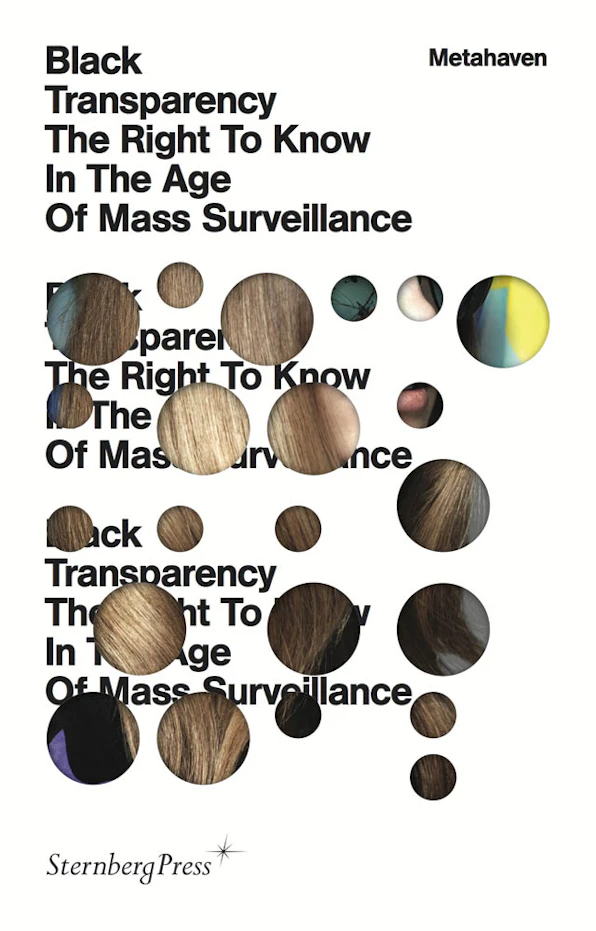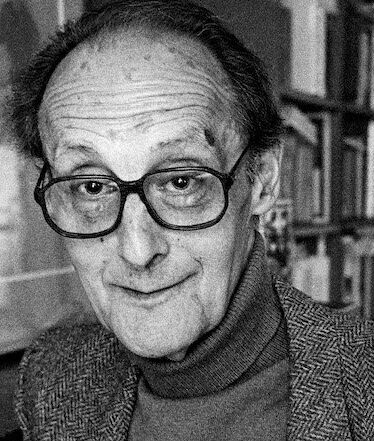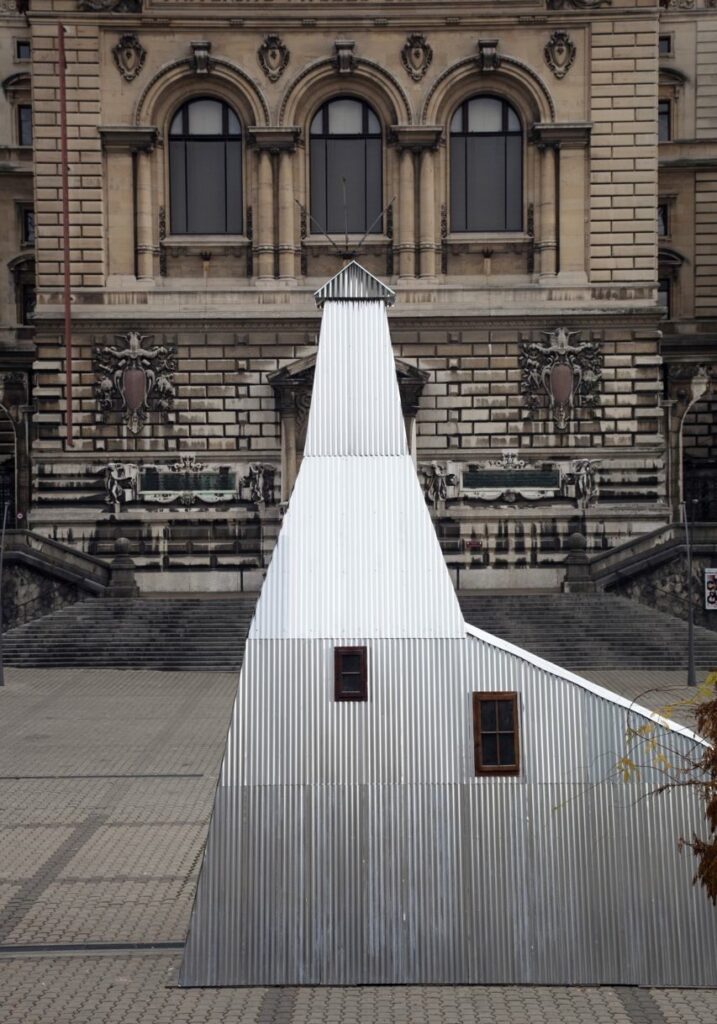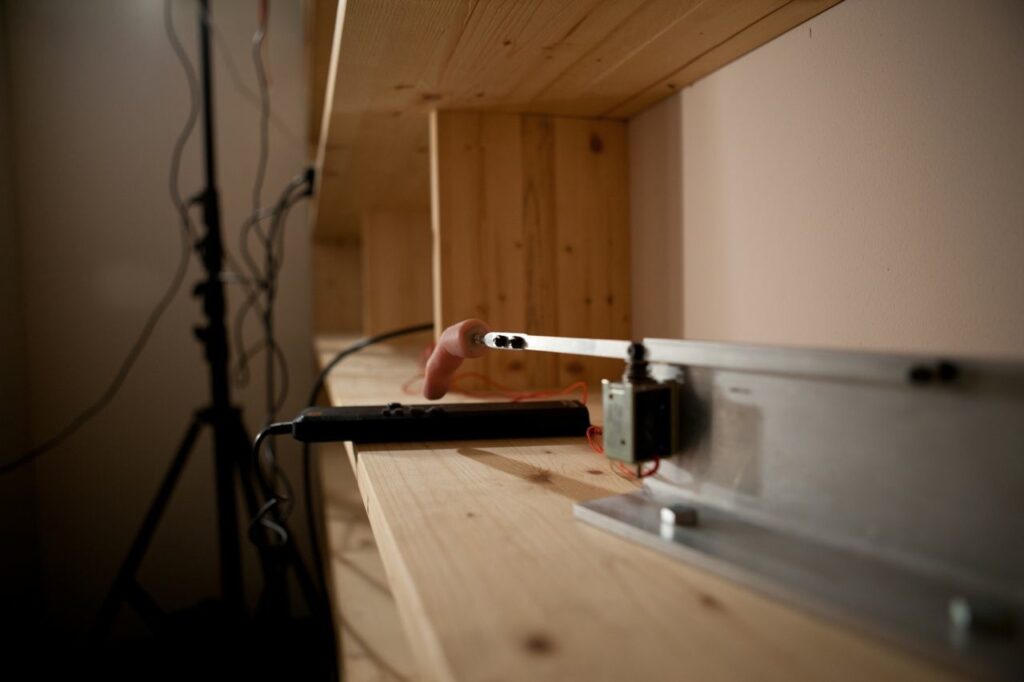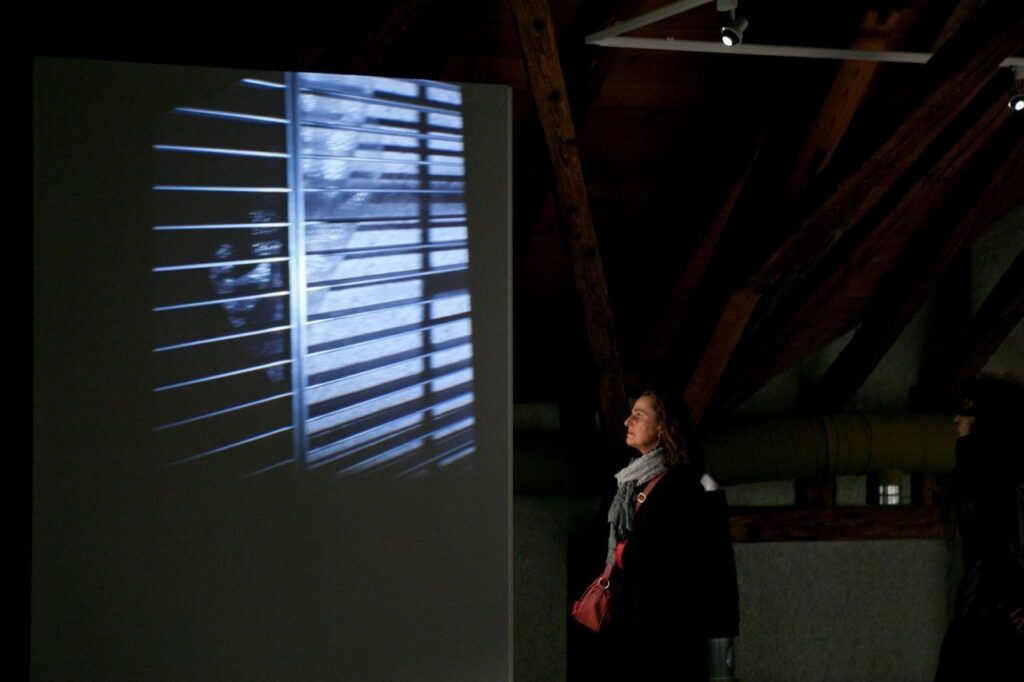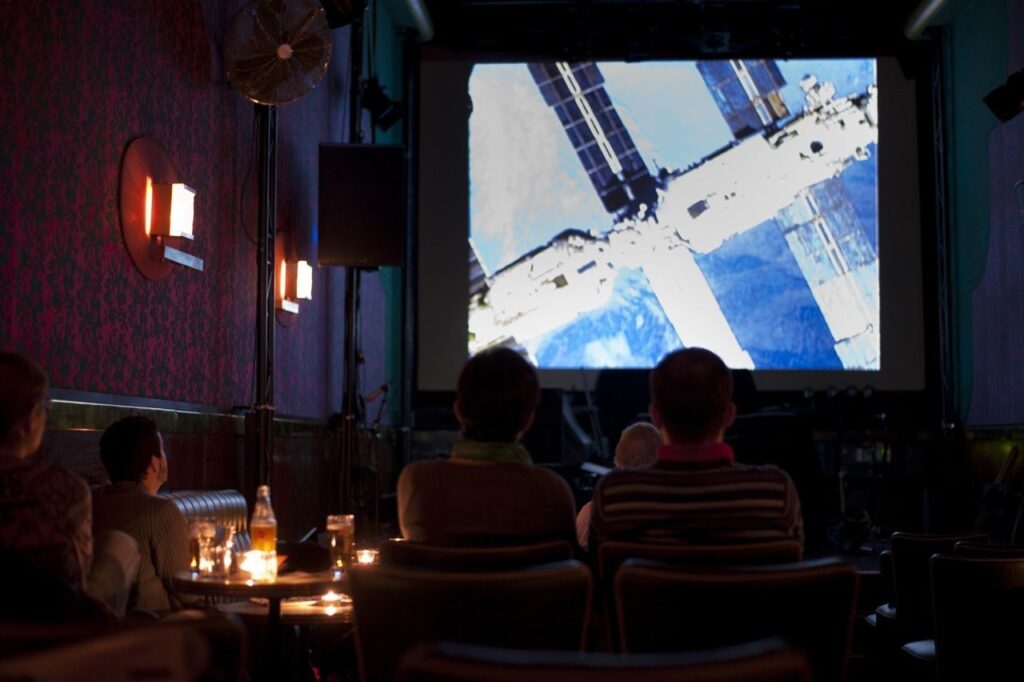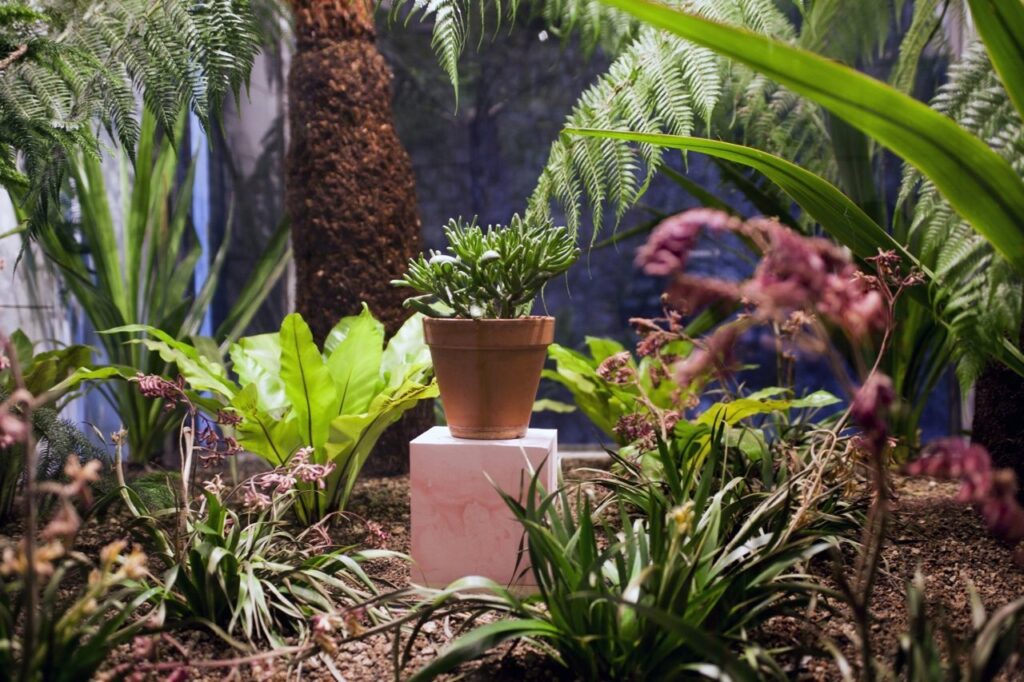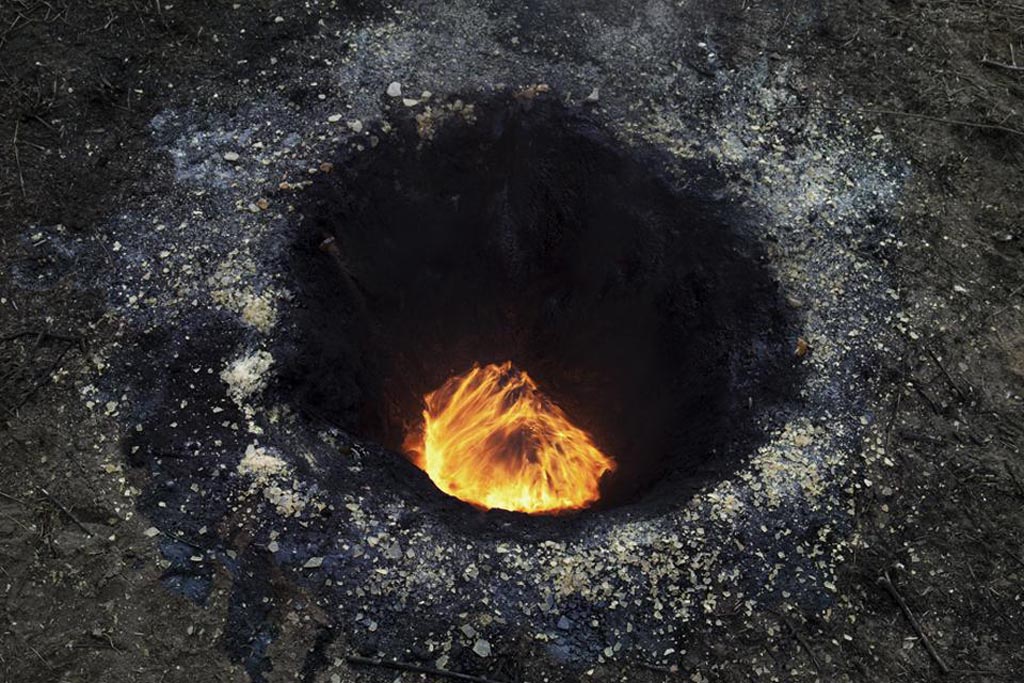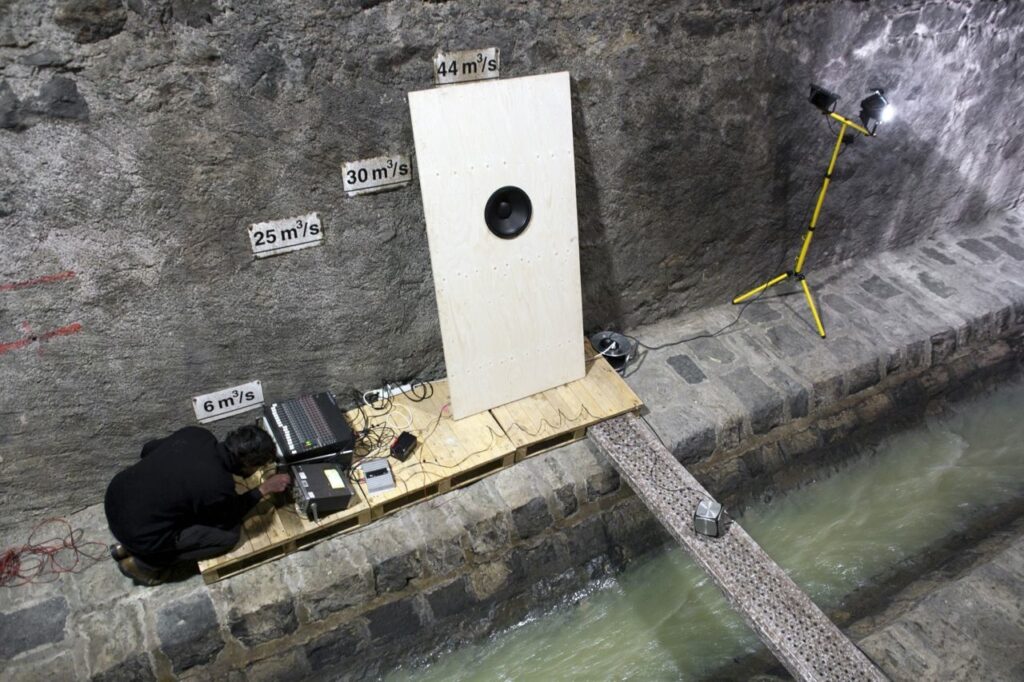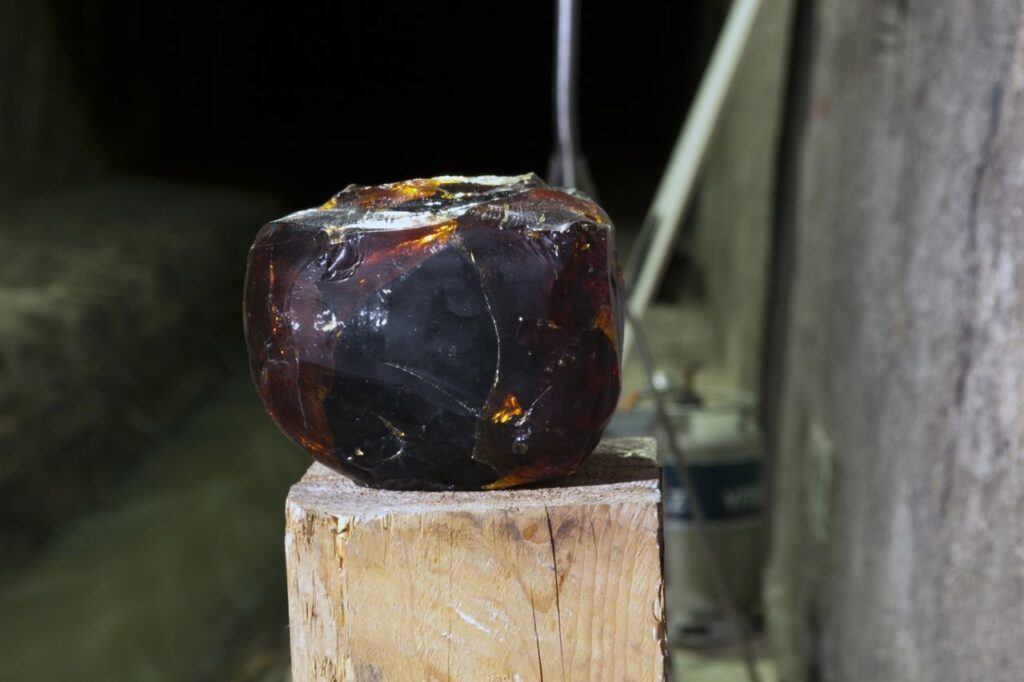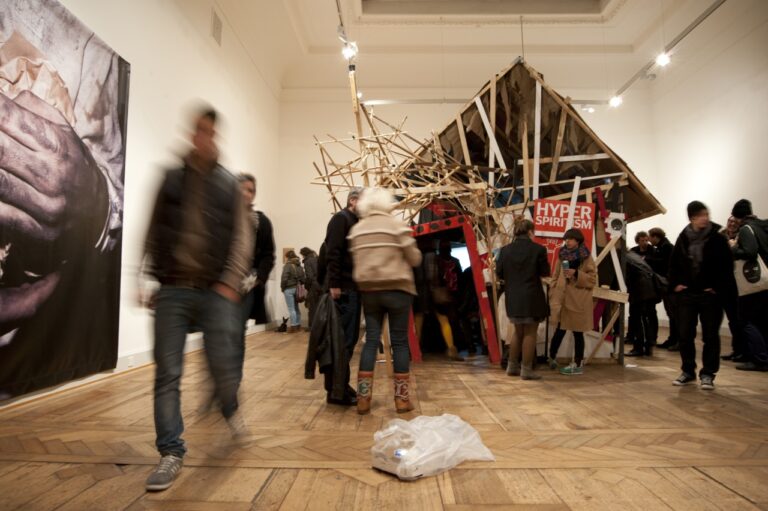
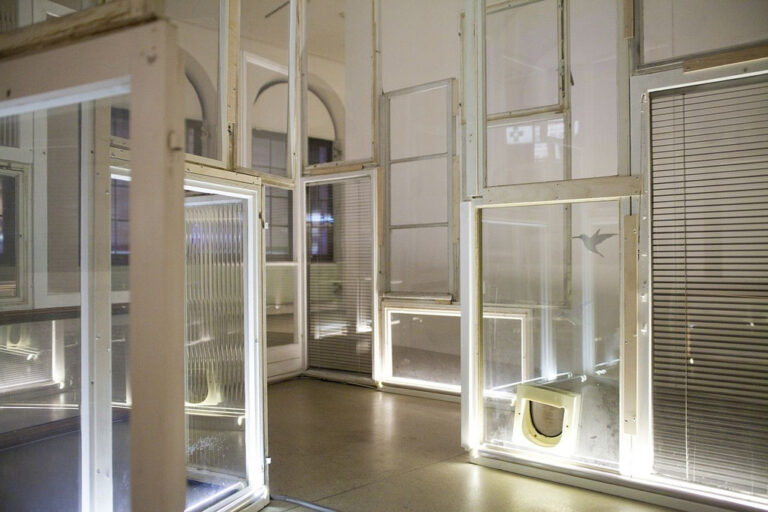
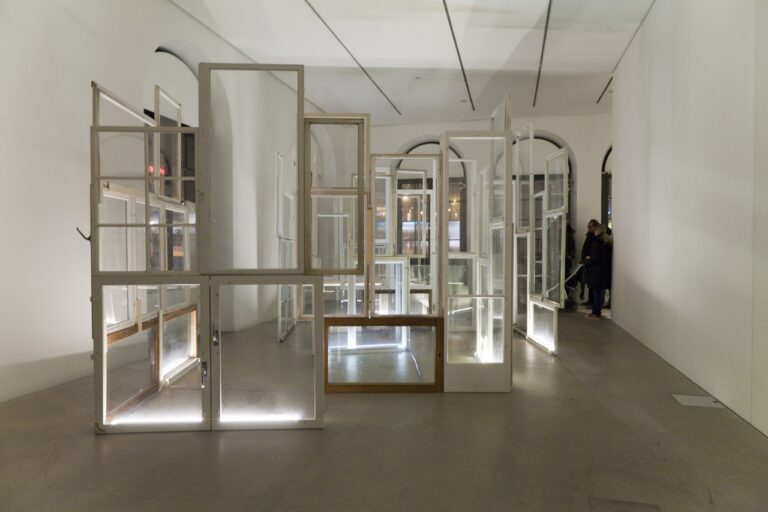
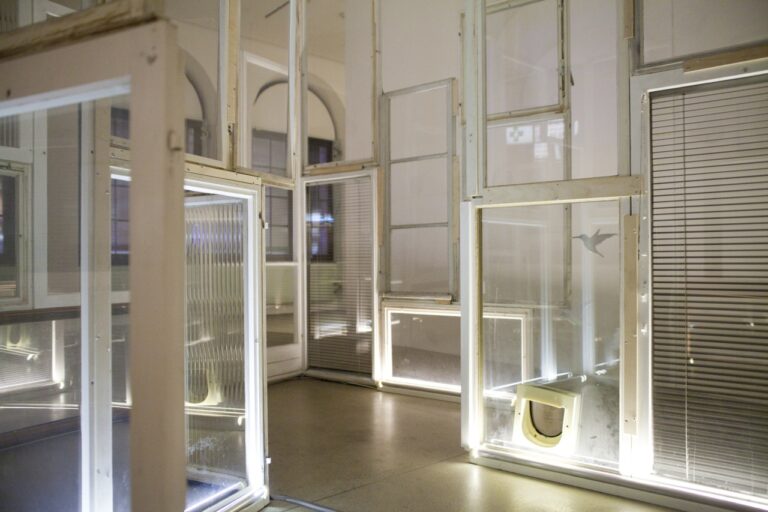
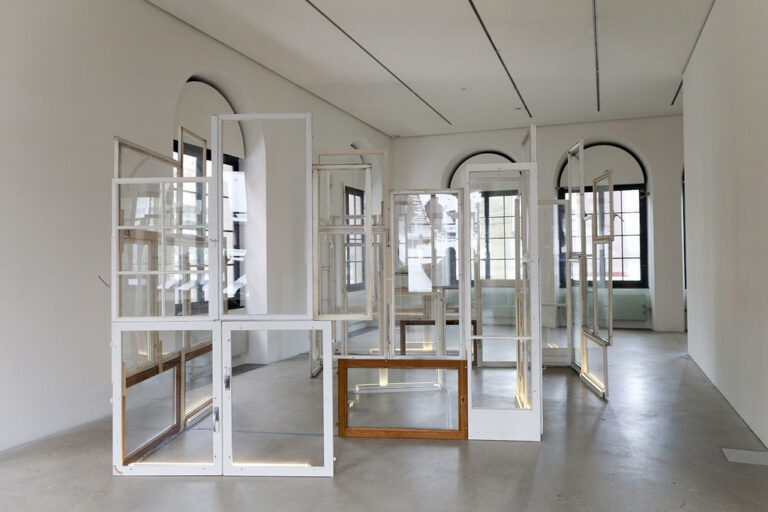
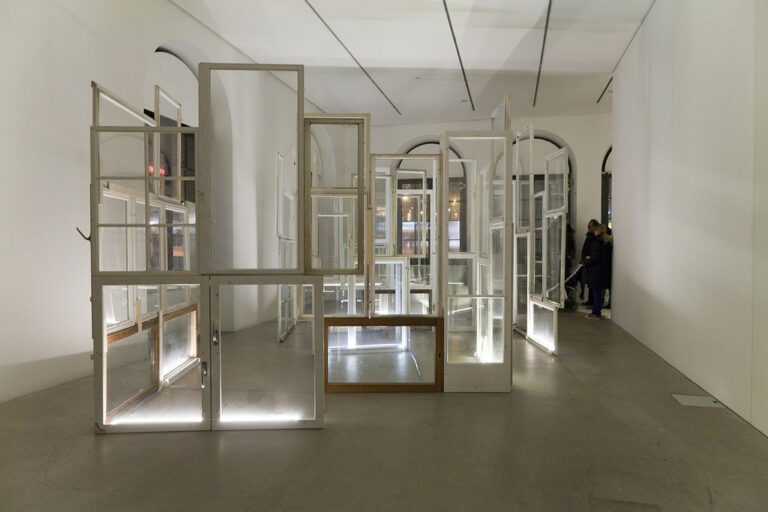
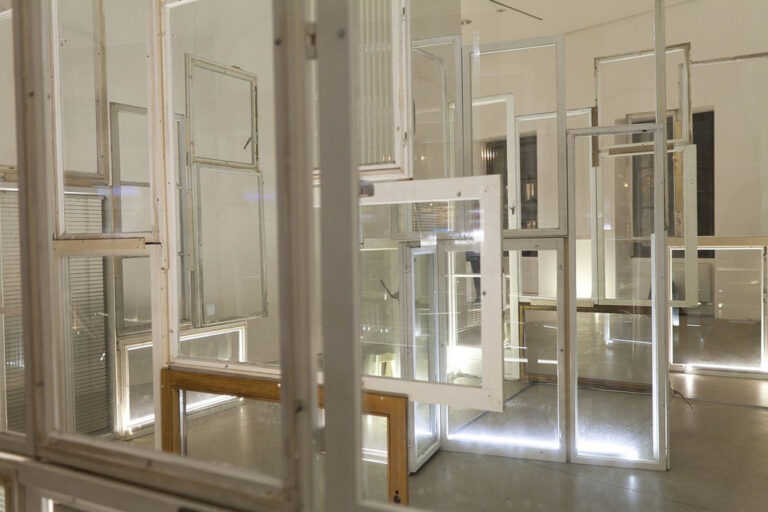
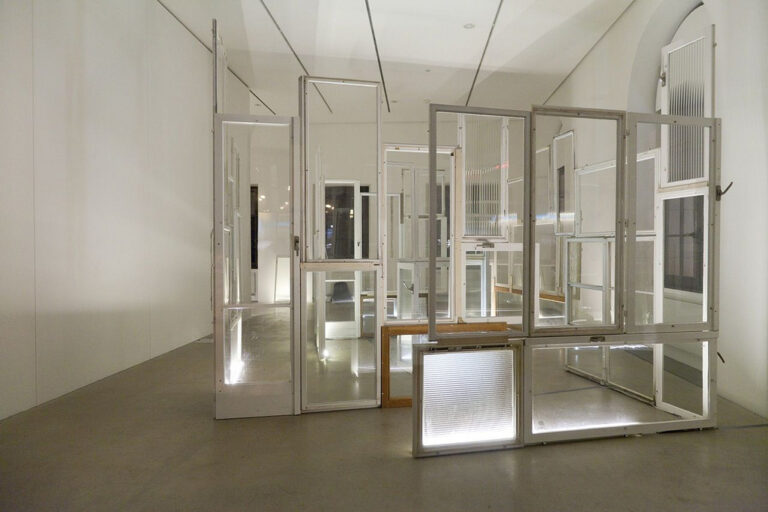
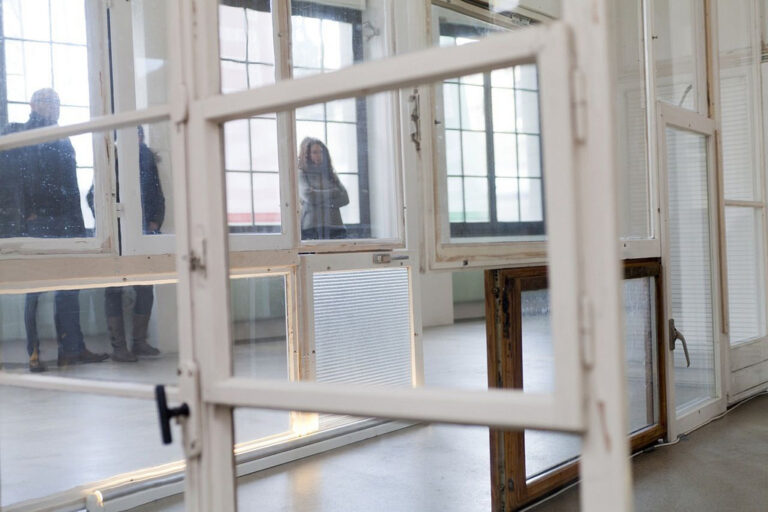
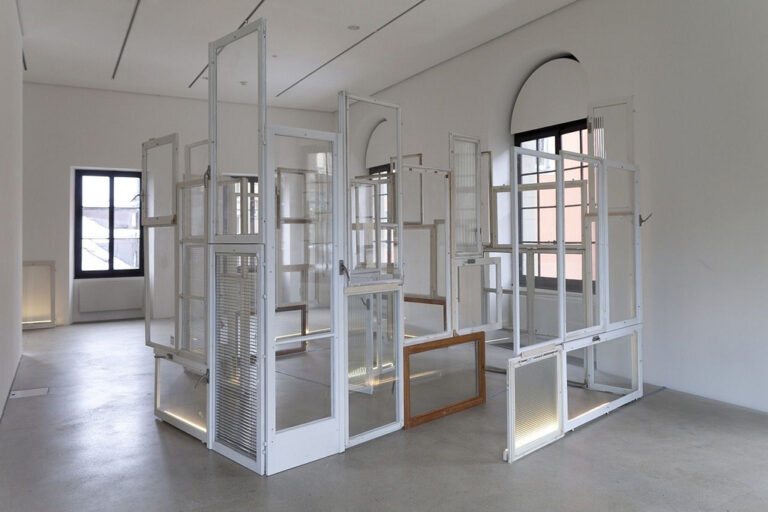
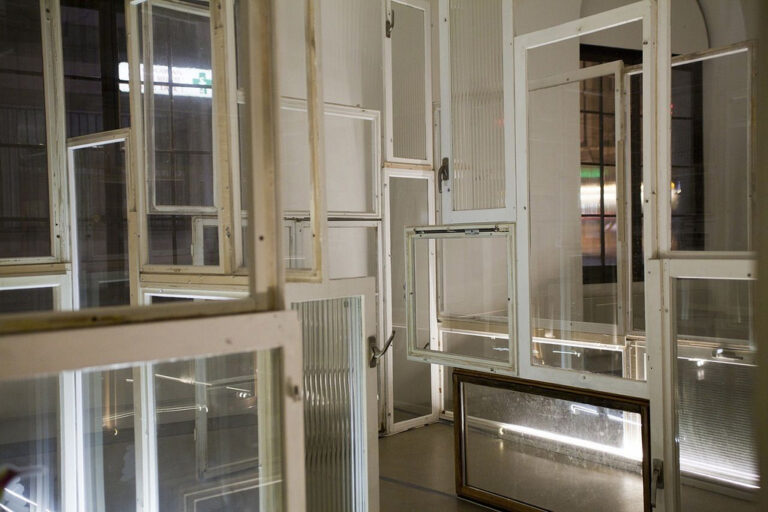
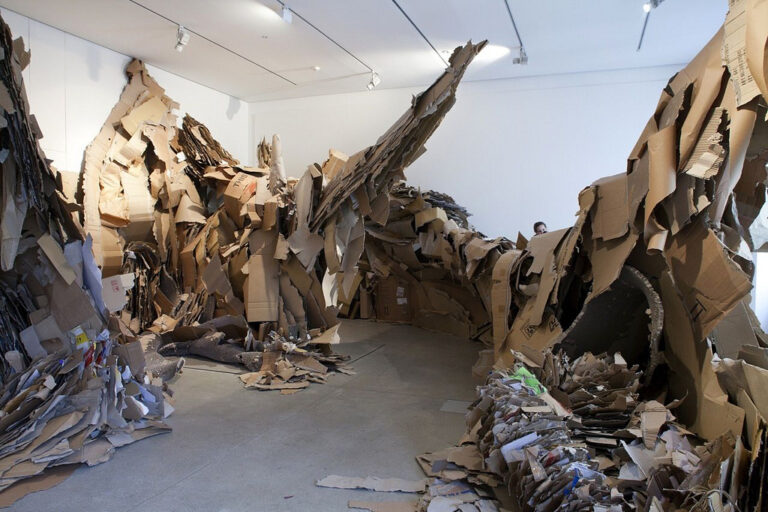
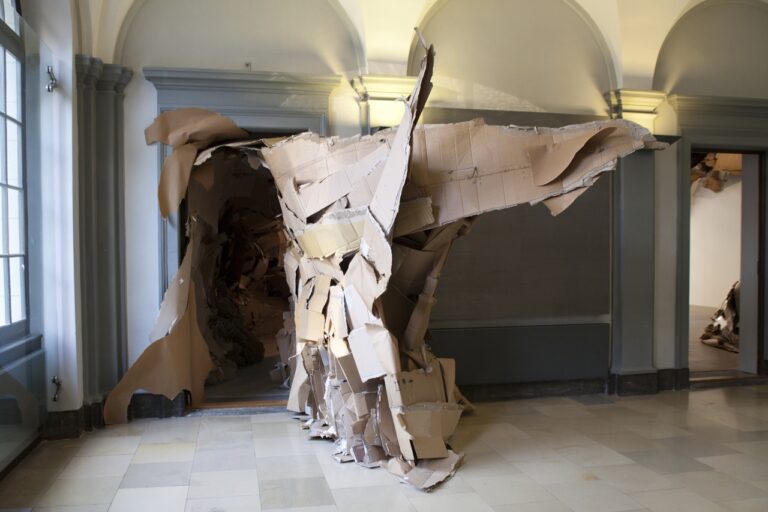
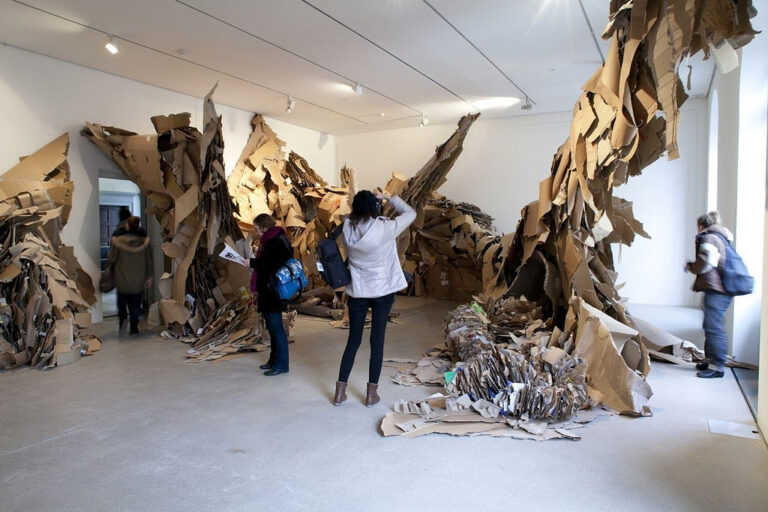
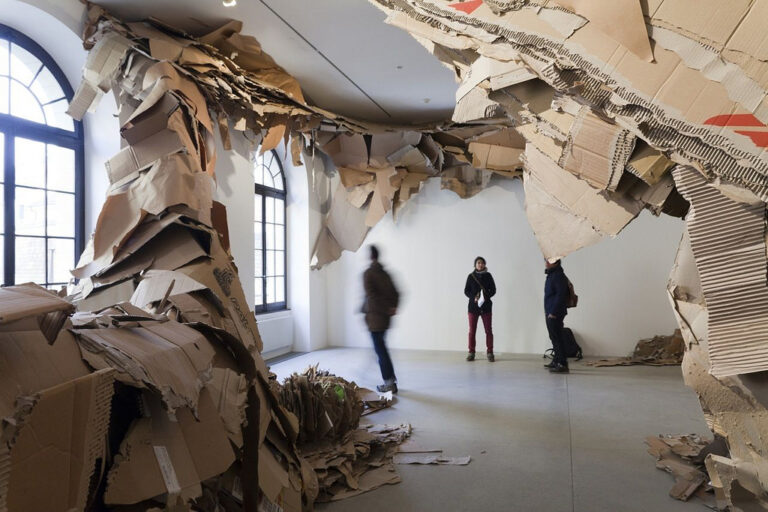
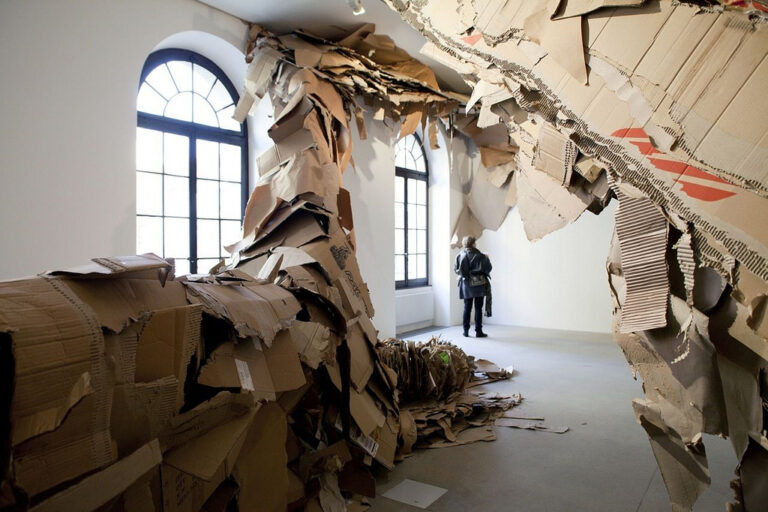
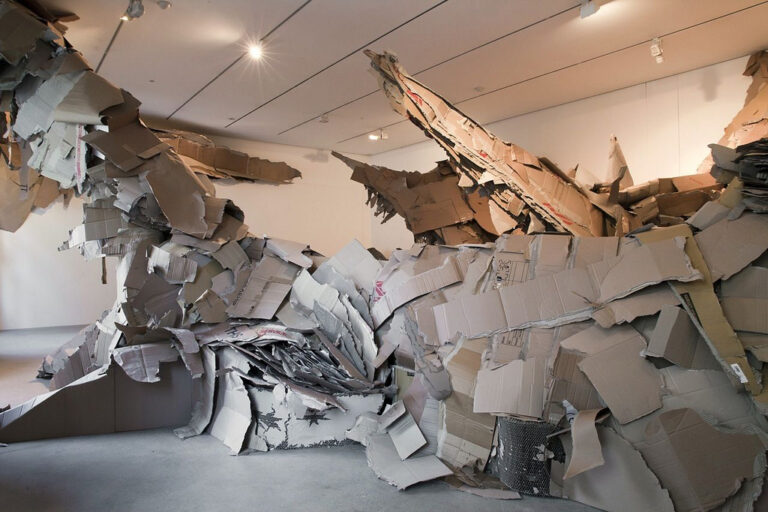
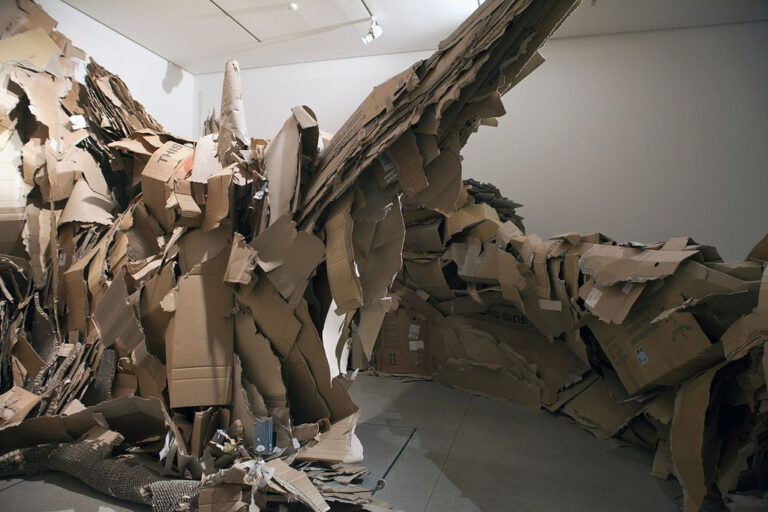
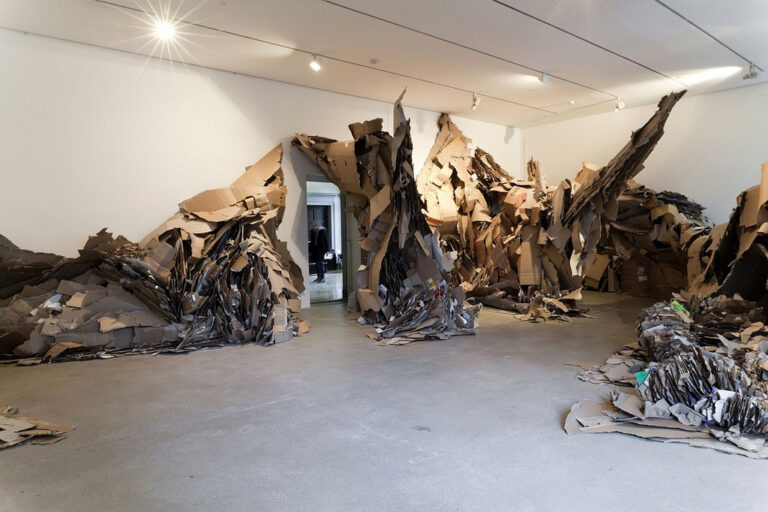
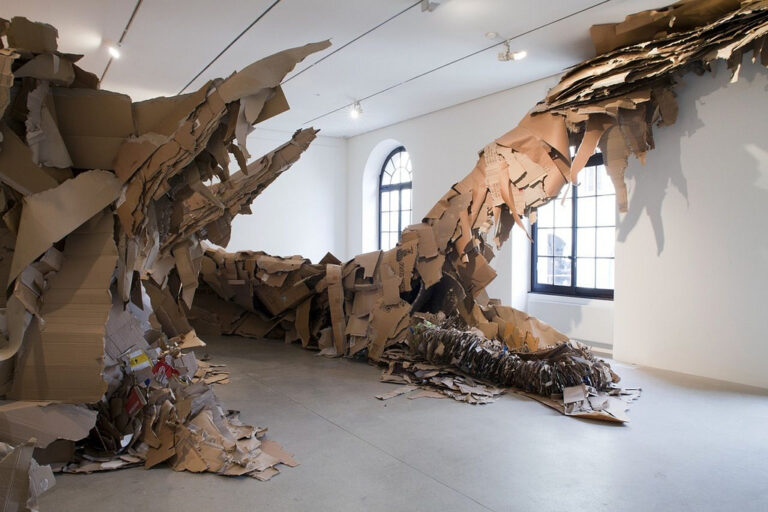
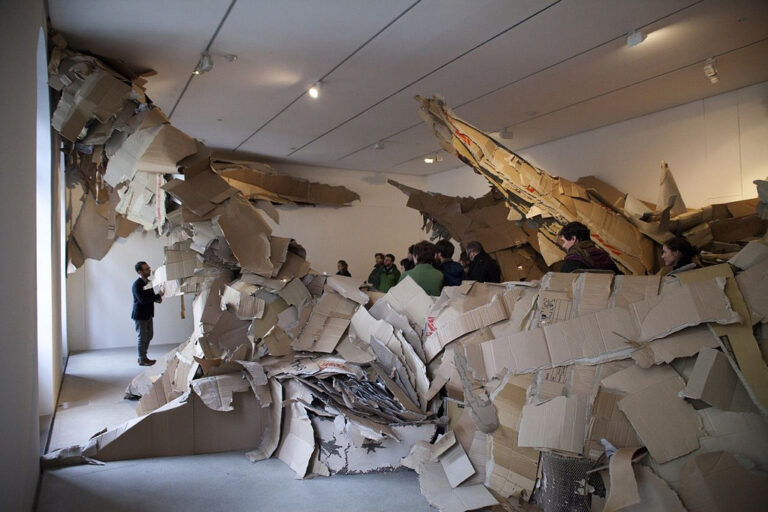
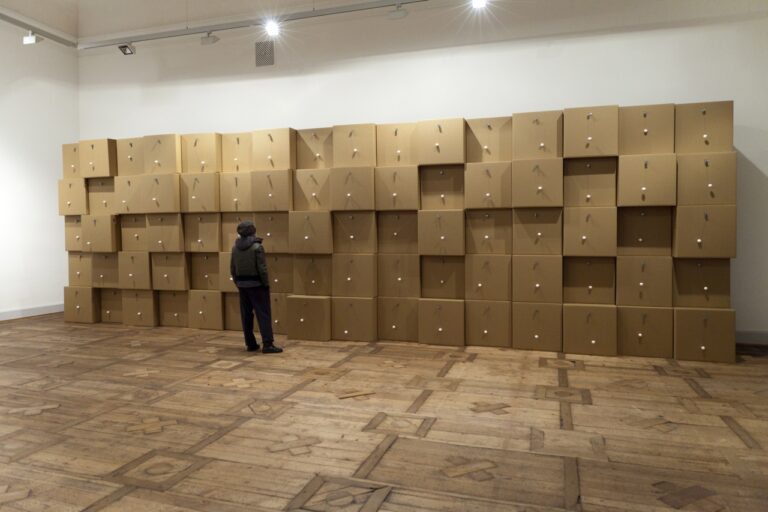
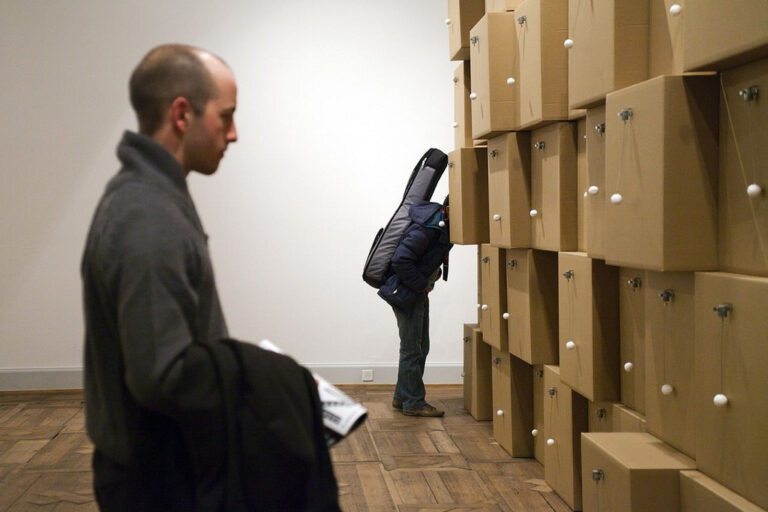
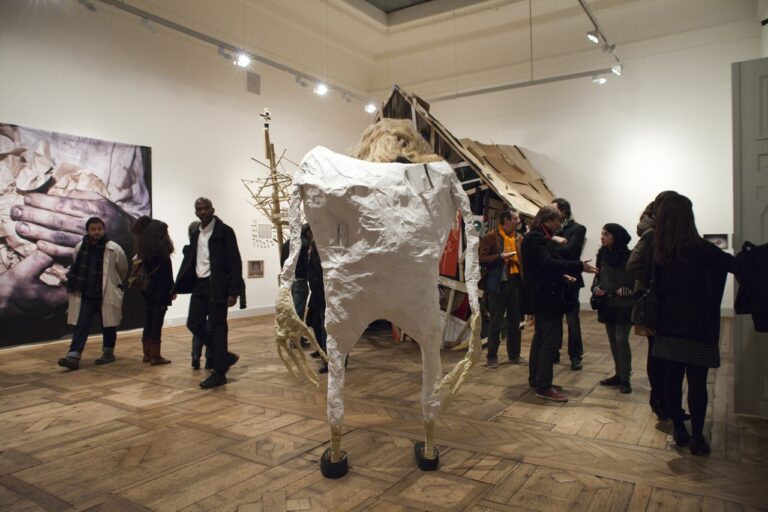
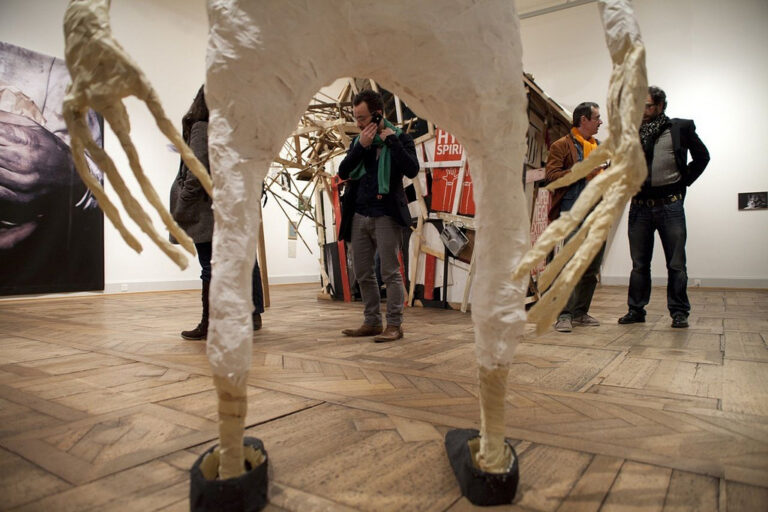
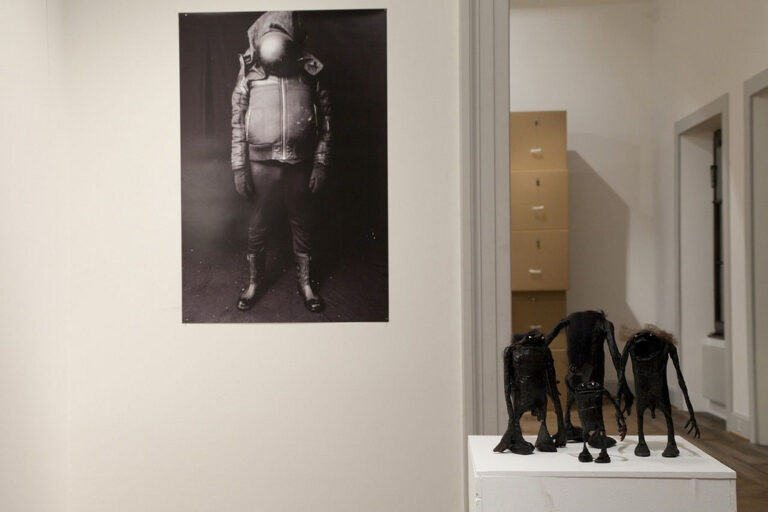
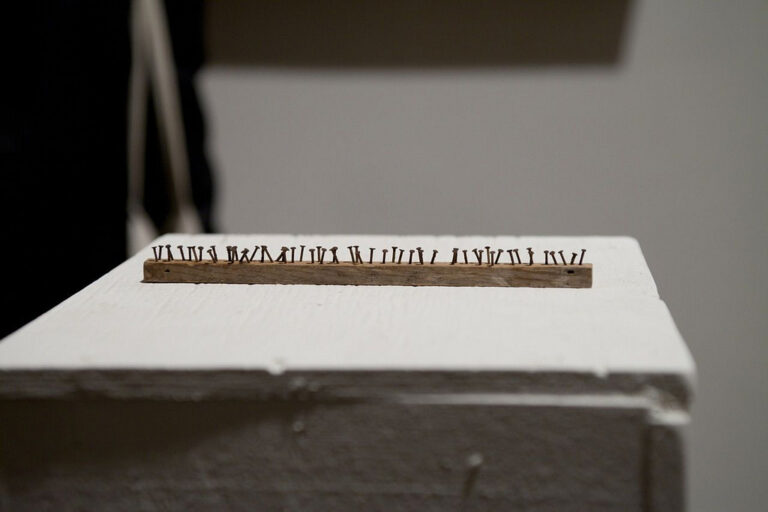
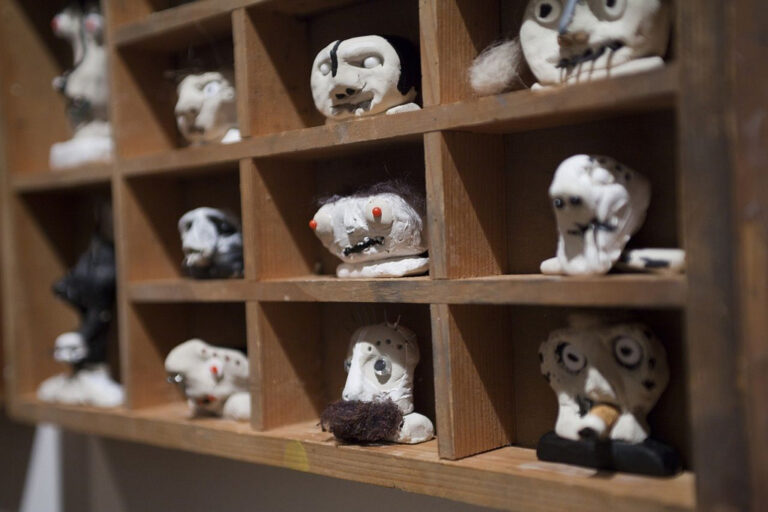
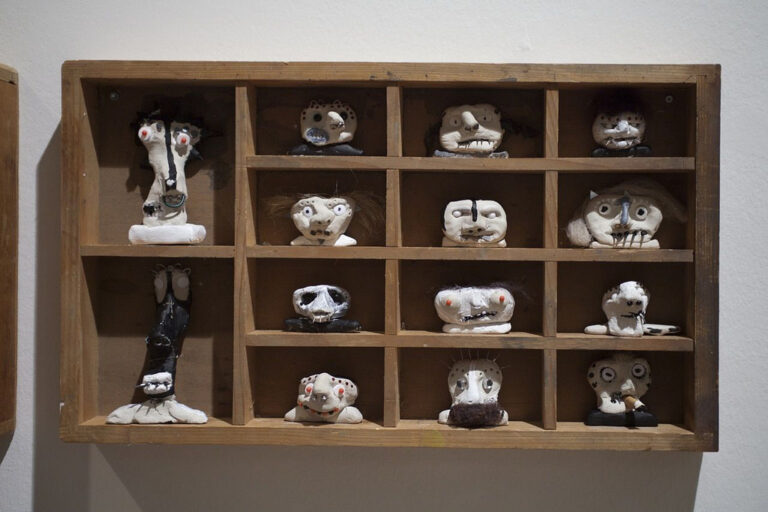
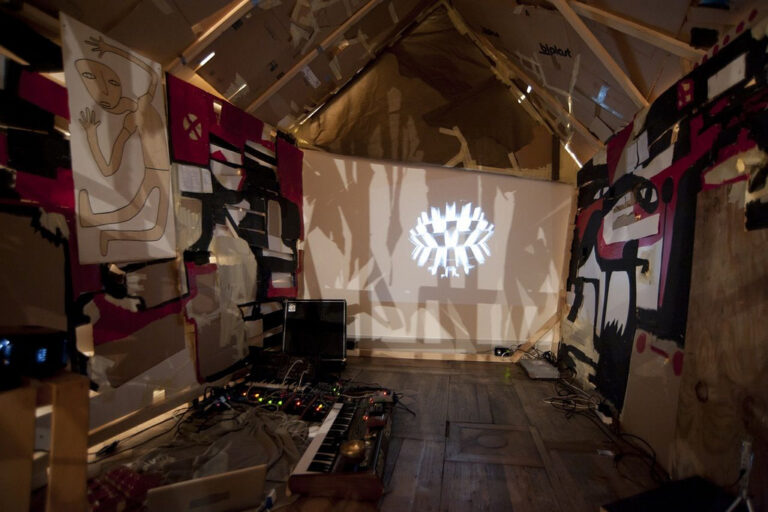

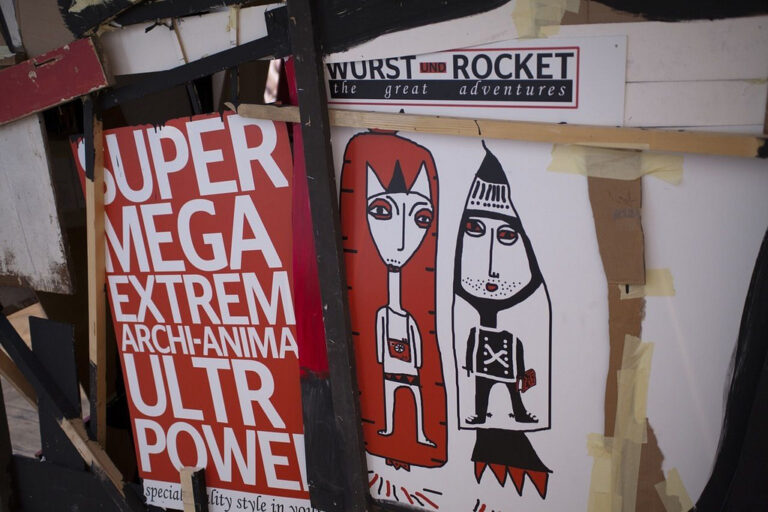
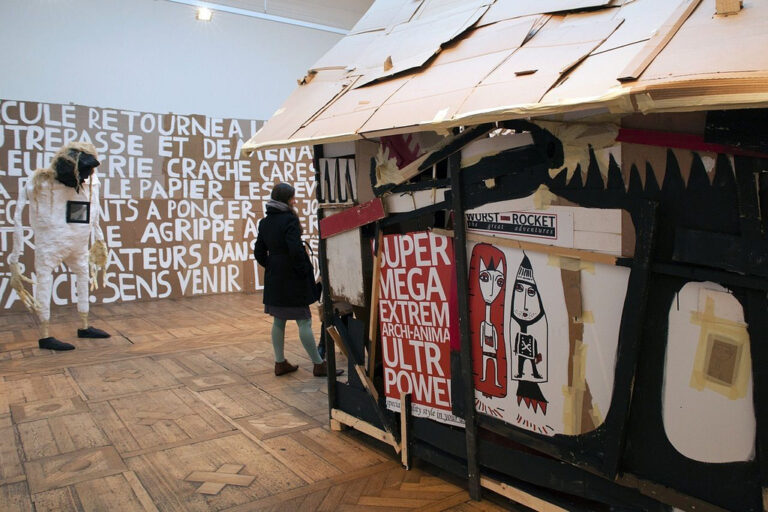
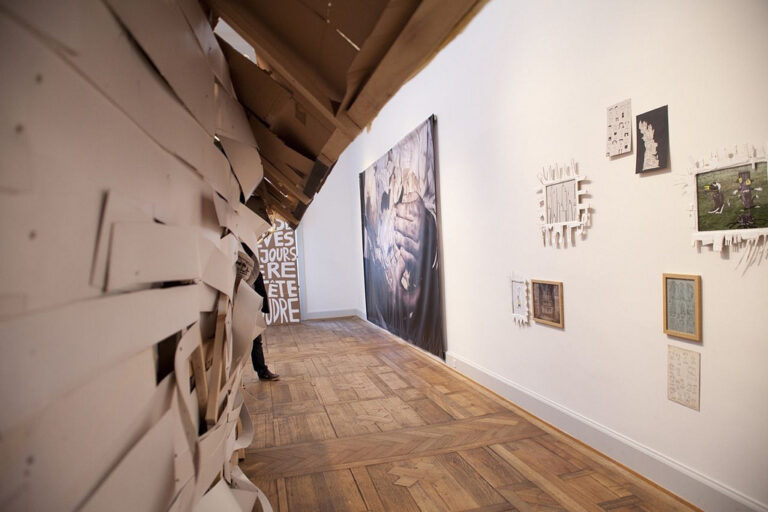
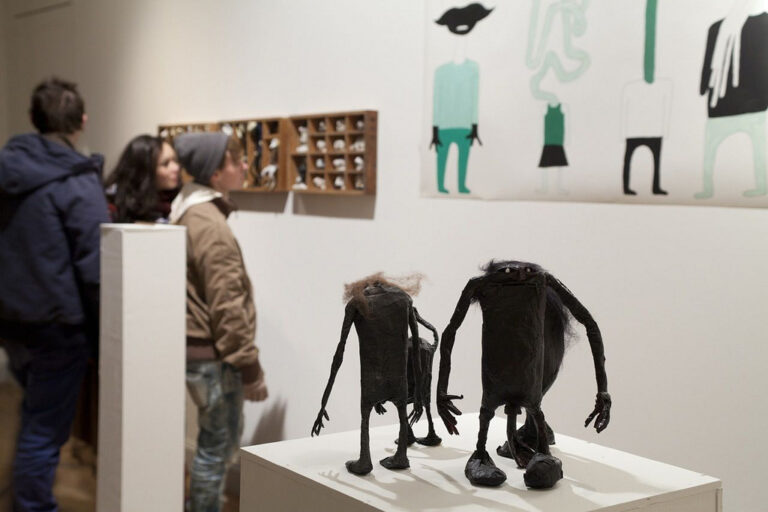
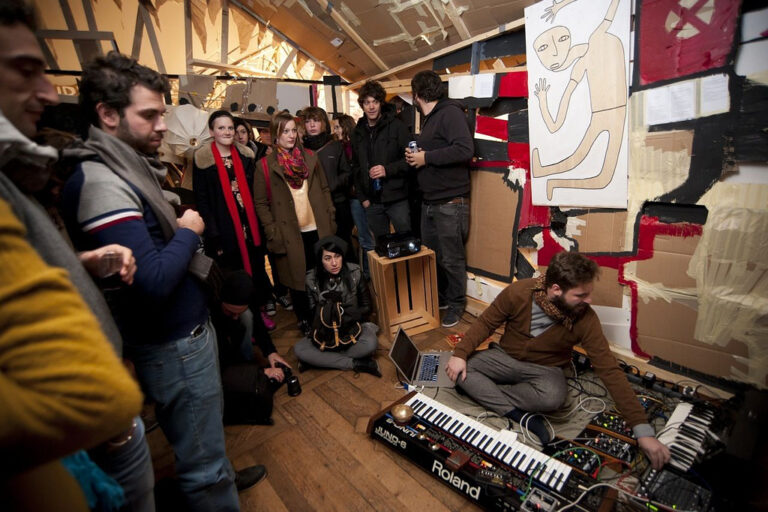
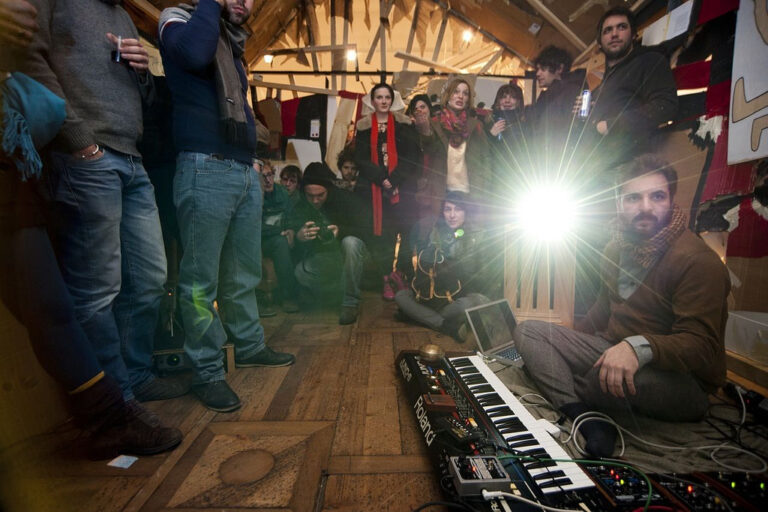
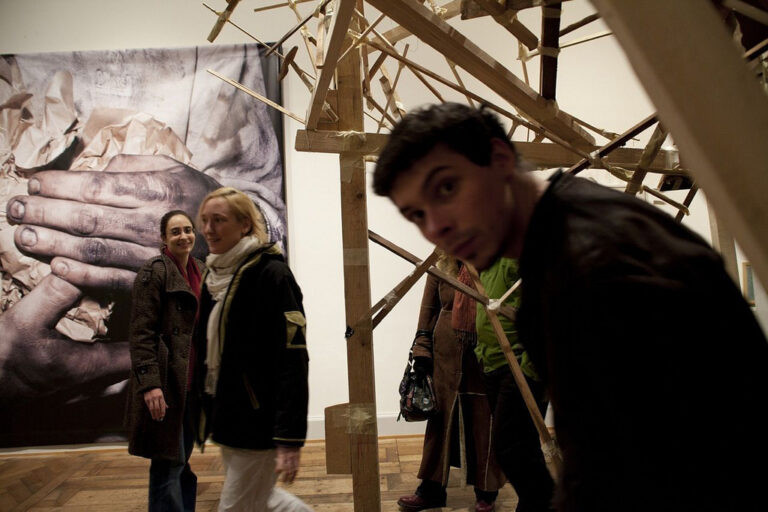
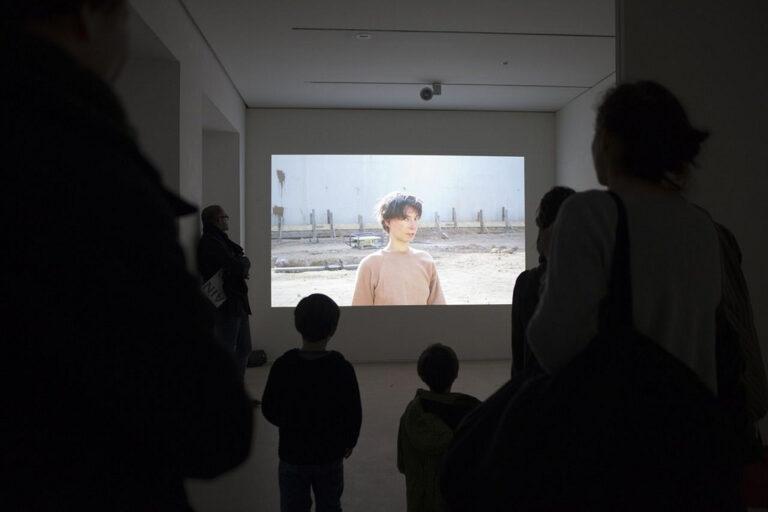
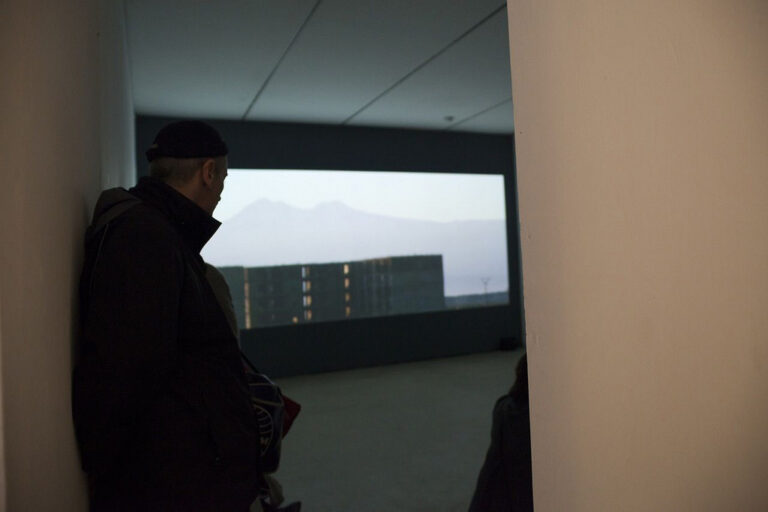
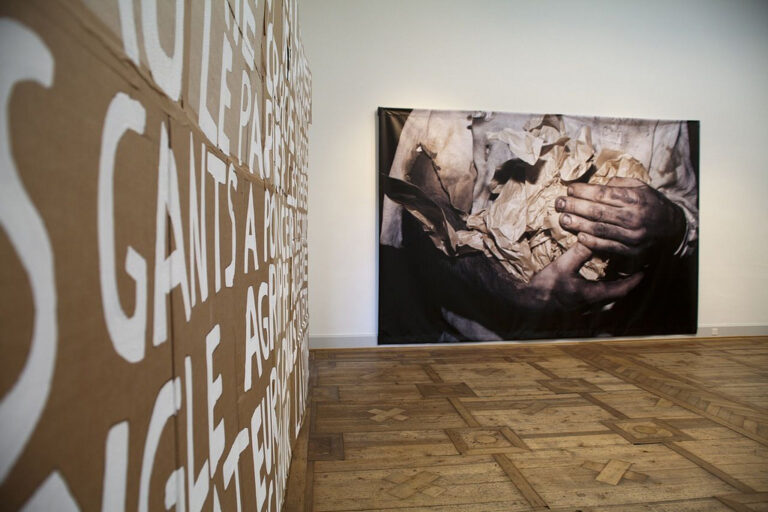
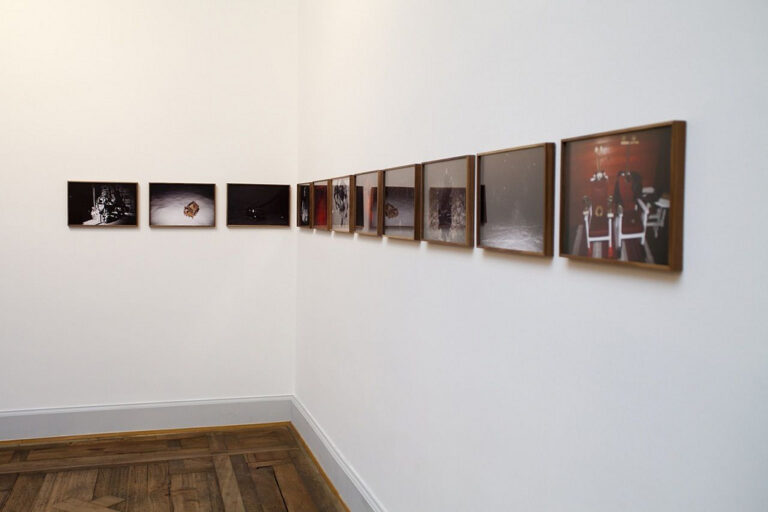
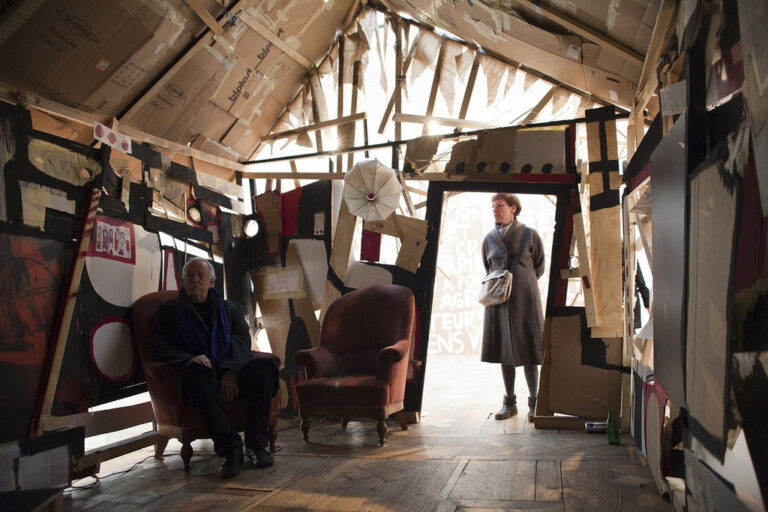
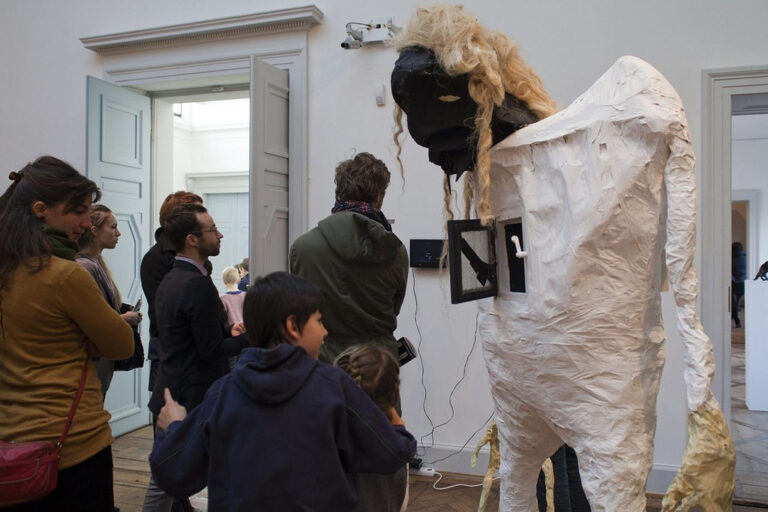
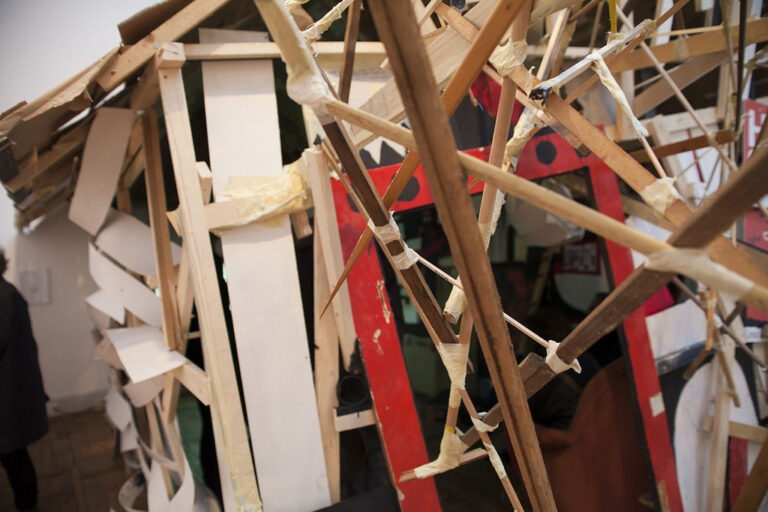
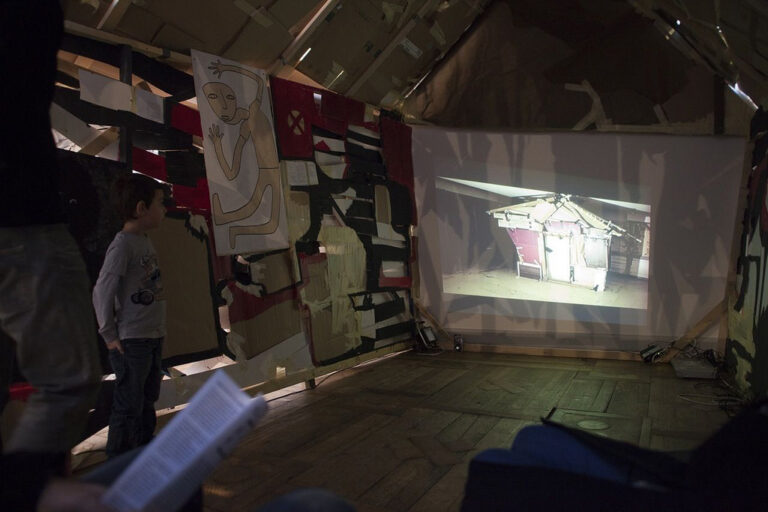
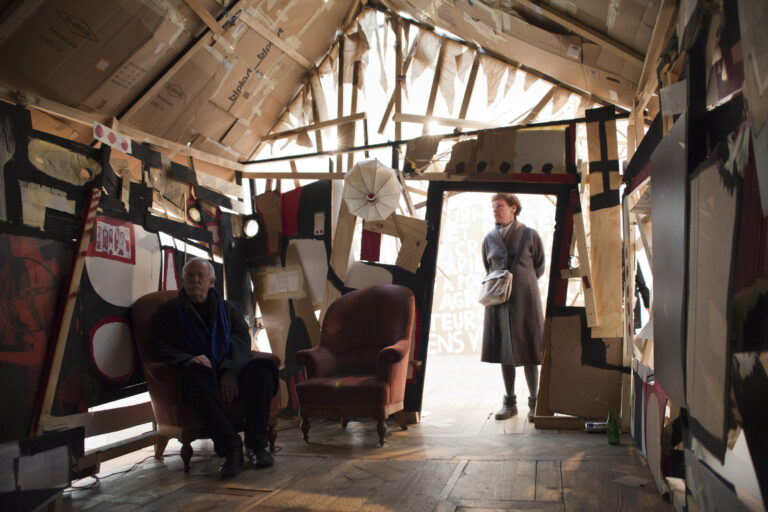
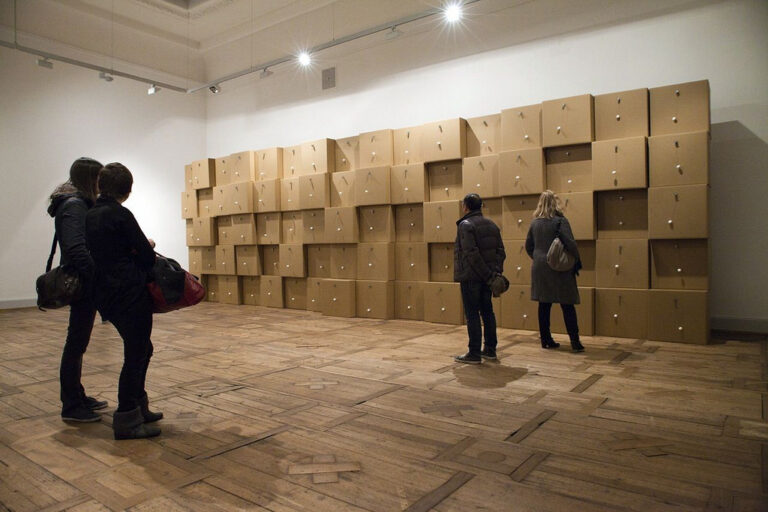
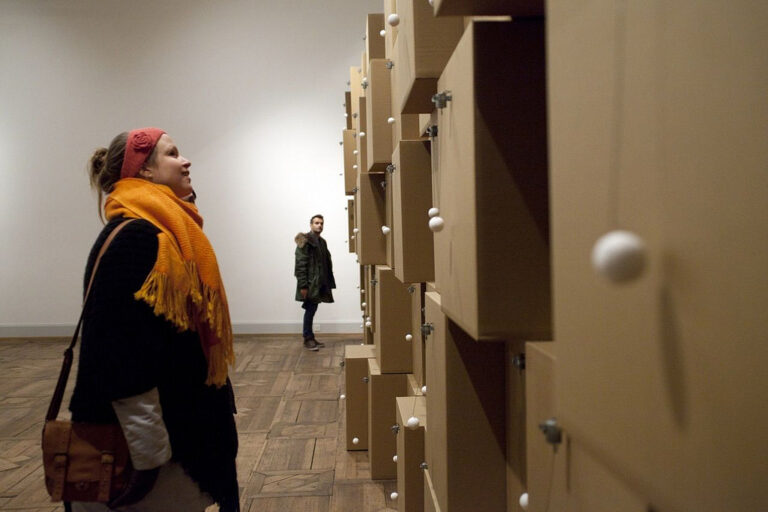
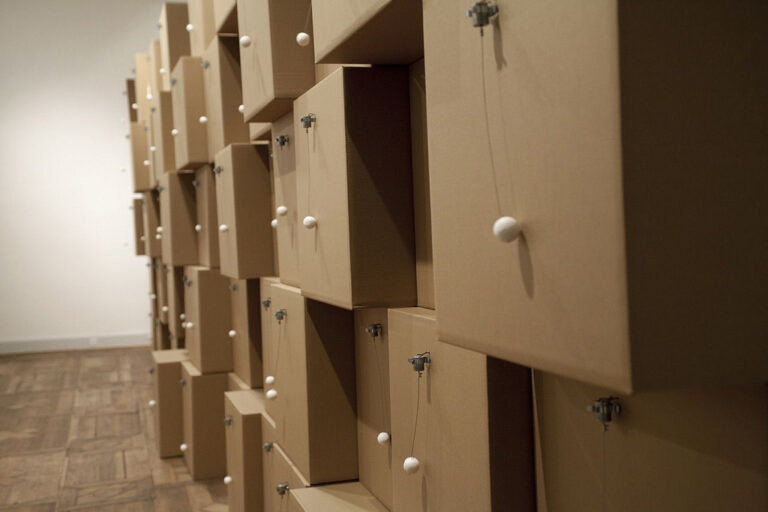
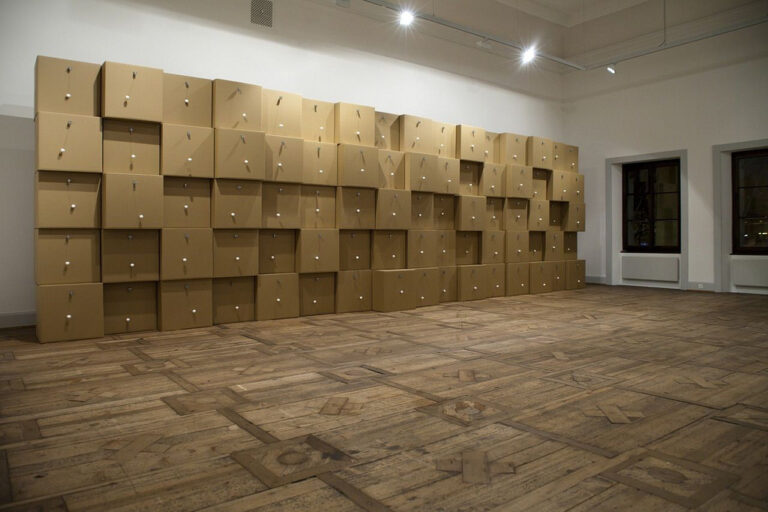
FESTIVAL
LES URBAINES
LAUSANNE
2012
Dispositifs &
Interstices
Aldo Mozzini
Augustin Rebetez
Noé Cauderay
Lucas Herzig
Mélodie Mousset
Uriel Orlow
Zimoun
Curatorial
statement
A kind of underlying awareness links the various artistic interventions in this edition. Far from wishing to express any kind of ethical or political value judgement, the guiding thread running through this exhibition at the Espace Arlaud is a controlled surveillance of the situation in which we live: a crisis that is constantly expressed in the media, tirelessly summoned to television debates, seems to inhabit or rather saturate our daily lives, to such an extent that a kind of acquiescence settles in with apparent normality, as if the crisis were an intrinsic and necessary component of our system. Of course, there’s nothing new about this situation. Crises have always marked the course of history, bringing with them both deadlock and change in an existing economic, social or cultural system.
In a definition that is now canonical, Michel Foucault describes the dispositif as the network that can be traced between the different elements of a heterogeneous whole, including laws and institutions, urban and architectural planning, structures for surveillance and the organisation of power, and scientific, philosophical and moral formulations. The system is a specific historical formation, resulting from the interplay of these multiple elements, which is distinguished by two major moments. First, it is put in place in response to a crisis situation, to meet the needs of the dominant economic, social, political or cultural structure.
Secondly, insofar as the system outlives the intentions behind its creation, it is maintained beyond the initial strategic objectives through a continuous readjustment of its constituent elements in order to manage the effects, intended or unforeseen, that it has itself generated. In thi dynasmic, emergence and discipline, spontaneity and constraint, freedom and coercive disposition engage in a movement of constant readjustment in the hope, desire or illusion of maintaining the dominant arrangement in place. This system, however, is not a precisely locatable entity, but rather a set of heterogeneous elements, a dynamic structure comprising a multitude of other constitutive systems.
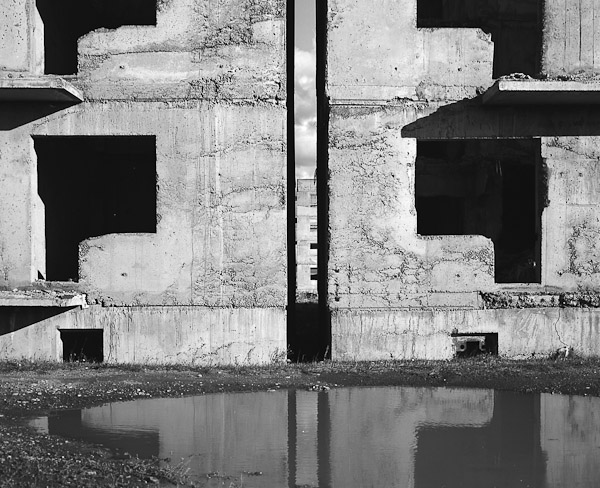
According to the definition of the Italian philosopher Giorgio Agamben, a device is anything that, in one way or another, has « the capacity to capture, orientate, determine, intercept, model, control and ensure gestures and behaviours, opinions and discourses » within a particular system.
In this sense, literature, art and philosophy, agriculture, engineering, mobile phones and electric motors, digital devices and national pavilions at world’s fairs can all be considered as tools.
Augustion Rebetez and Noé Cauderay use seemingly discordant assemblages and asymmetrical compositions to multiply the possibilities for interpretation. Not without a slightly wry, offbeat sense of humour, they develop a multi-faceted body of work.
Uriel Orlow works in the interstices of history, between proven facts and fragmentary reconstructions of the past. His work asks us what we can say about history and what its shadows can reveal.
In Remnants of the Future, the ghost town of Mush, whose construction was interrupted by an earthquake in 1988, was left unfinished by the collapse of the Soviet Union. The city becomes the emblem of an absence, haunted by the spectres of an economic, political and ideological collapse.
In Melodie Mousset’s work, the body is conceived as both a physical and symbolic entity, a tangible manifestation of individuality, of belonging to a particular gender, and a primordial vector of social interaction. In On stoning and unstoning, the artist stages her own body and appears covered in stones, a material with ambivalent symbolism, evoking sculpture or ritual as much as violence. This unexpected semantic shift creates a tension between creation and destruction, punishment and defence, power and submission.
Whether it’s Zimoun’s monumental structures that are both rigorous and random, Aldo Mozzini’s strange and improbable pavilion, Lucas Herzig’s entropic refluxes, Augustin Rebetez and Noé Cauderay’s rhizomic and decadent arrangements, the architectural ghosts of Uriel Orlow, or the latent tension that emerges from the images of Mélodie Mousset, these are the more or less unexpected effects, the unforeseen shifts that infiltrate the zones of indeterminacy of a dominant device.
In this way, the gaps and interstices of the system are revealed in all their fertile, overflowing ambiguity, and emerge, like ghostly entities, through the various works presented in the exhibition spaces.
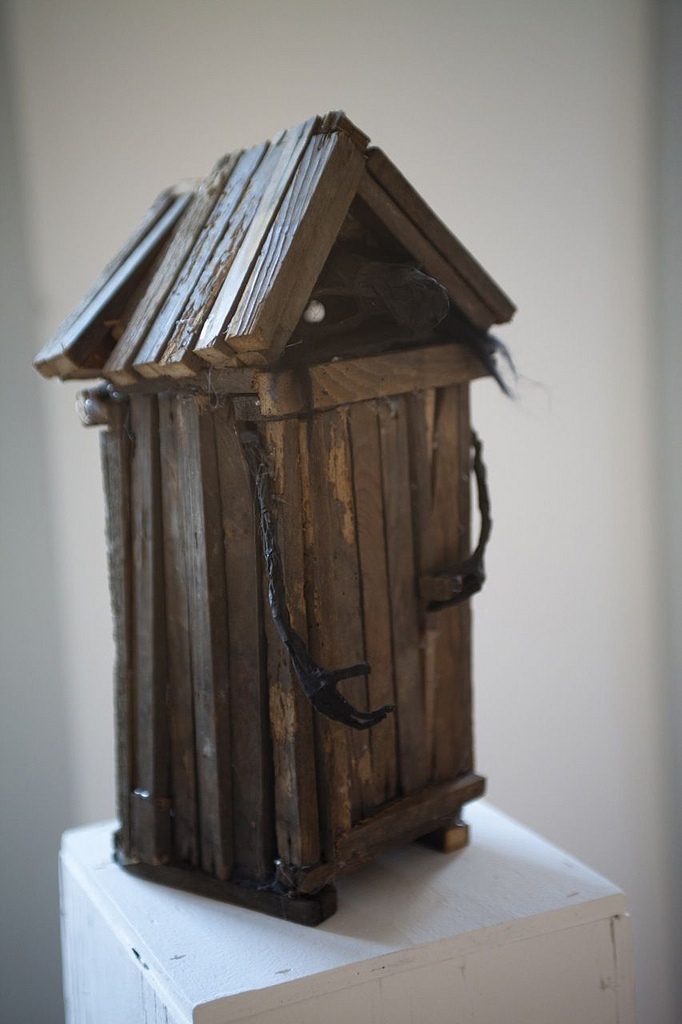
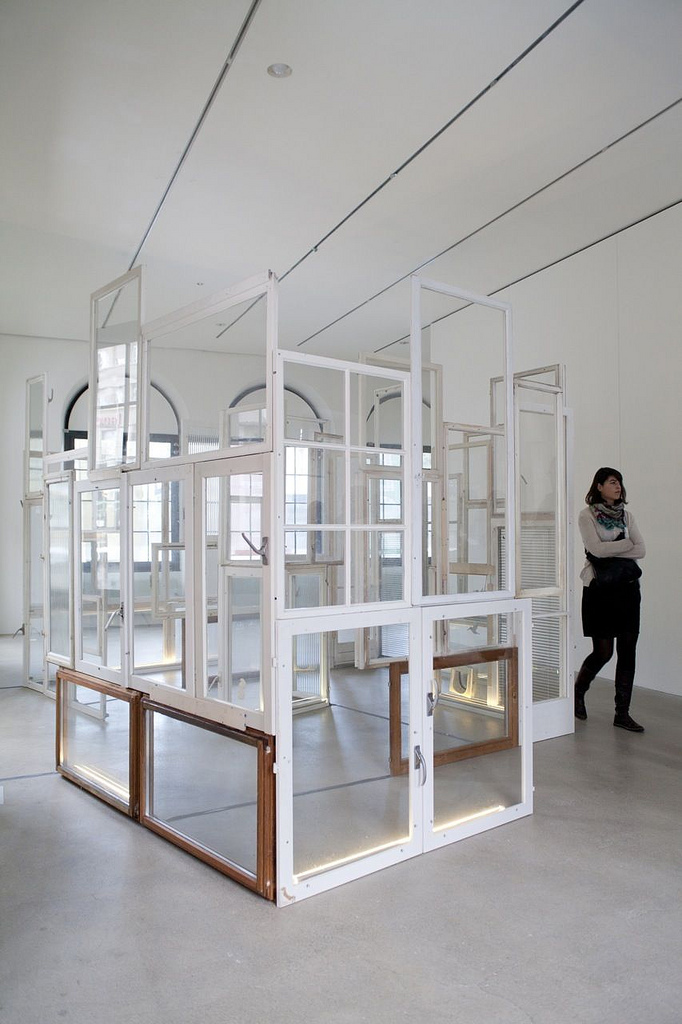
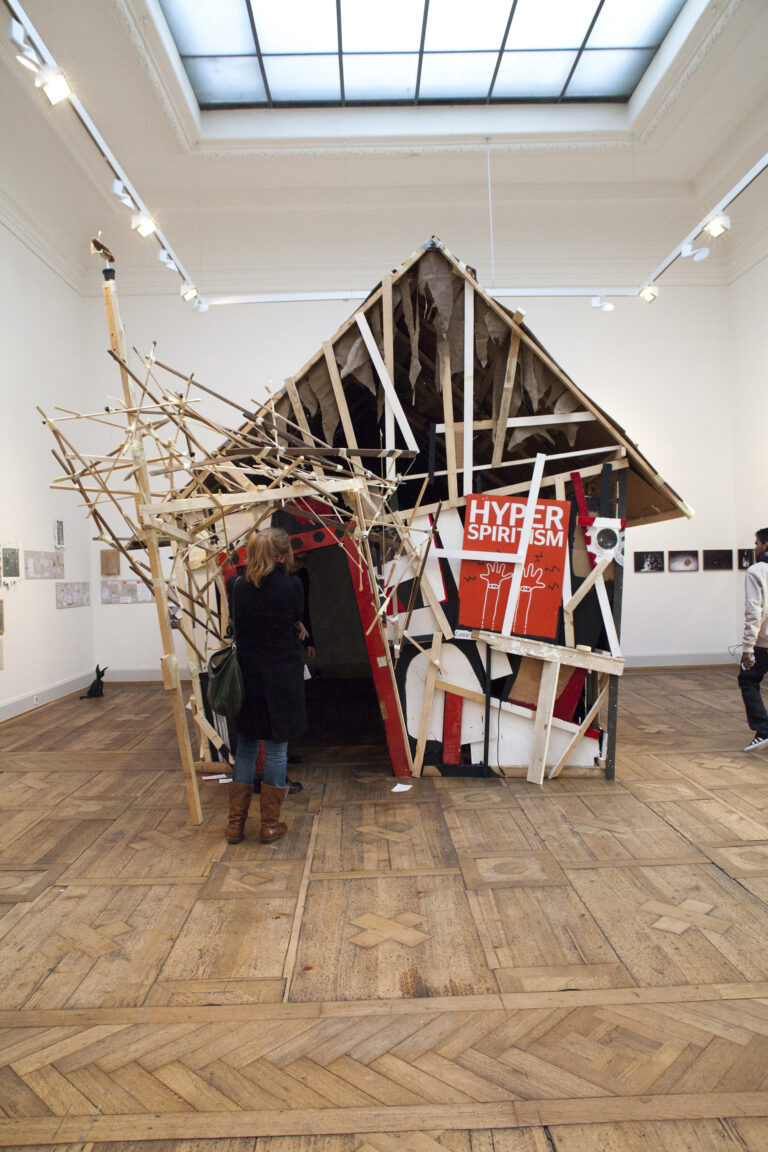
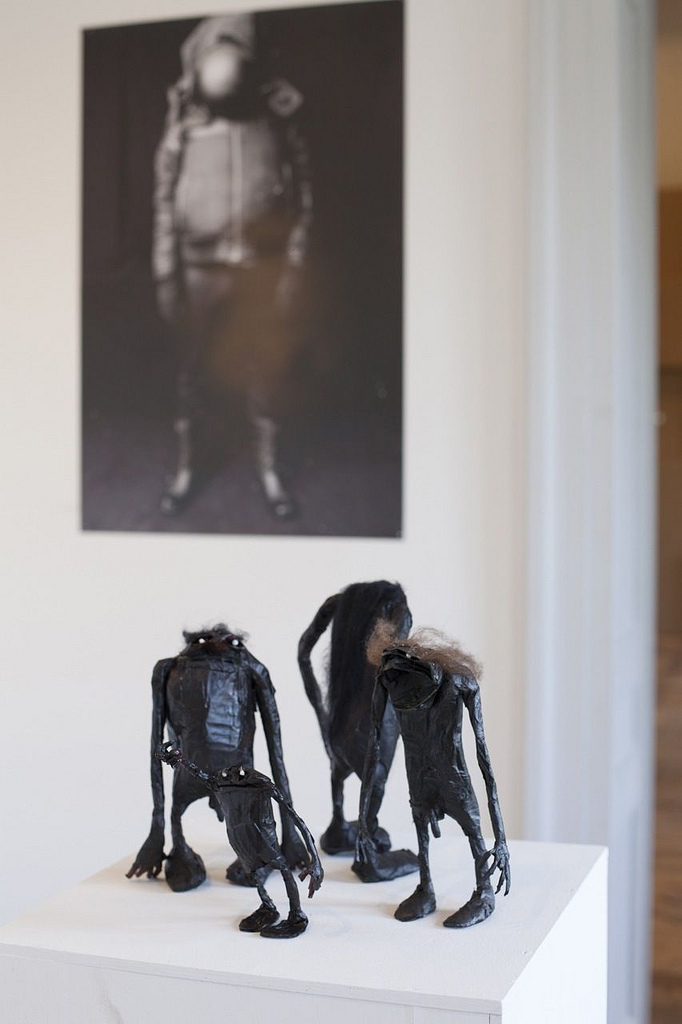
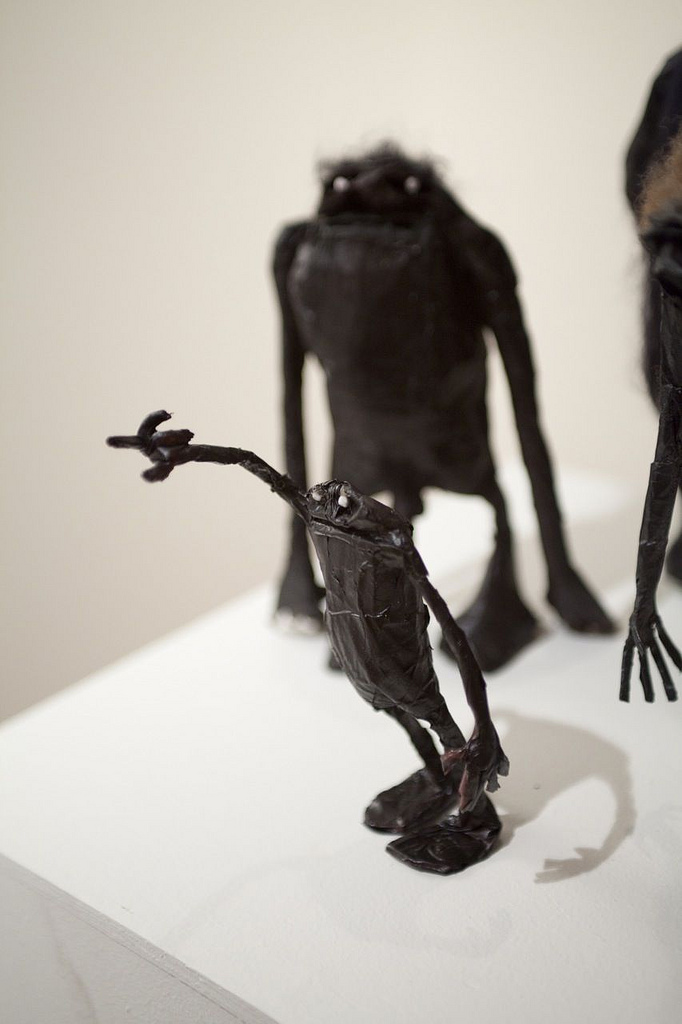
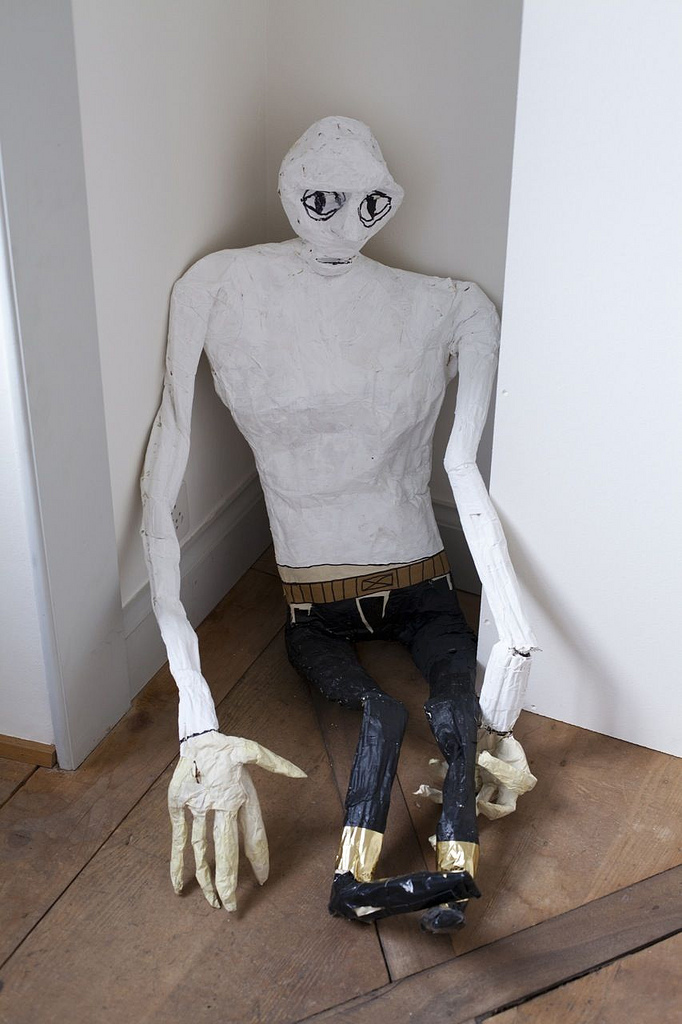
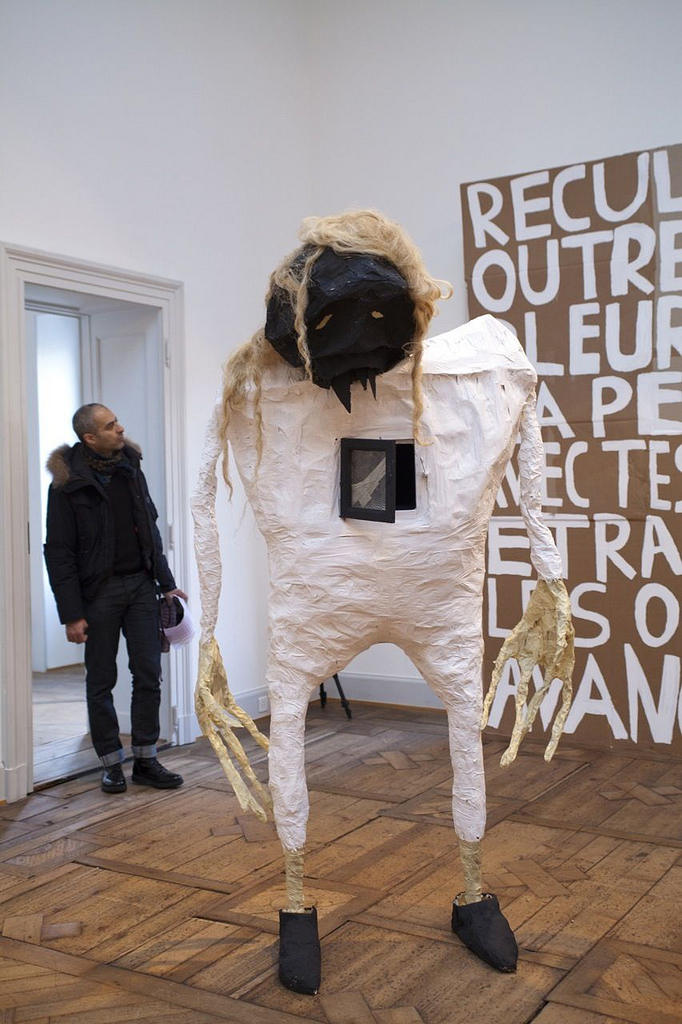
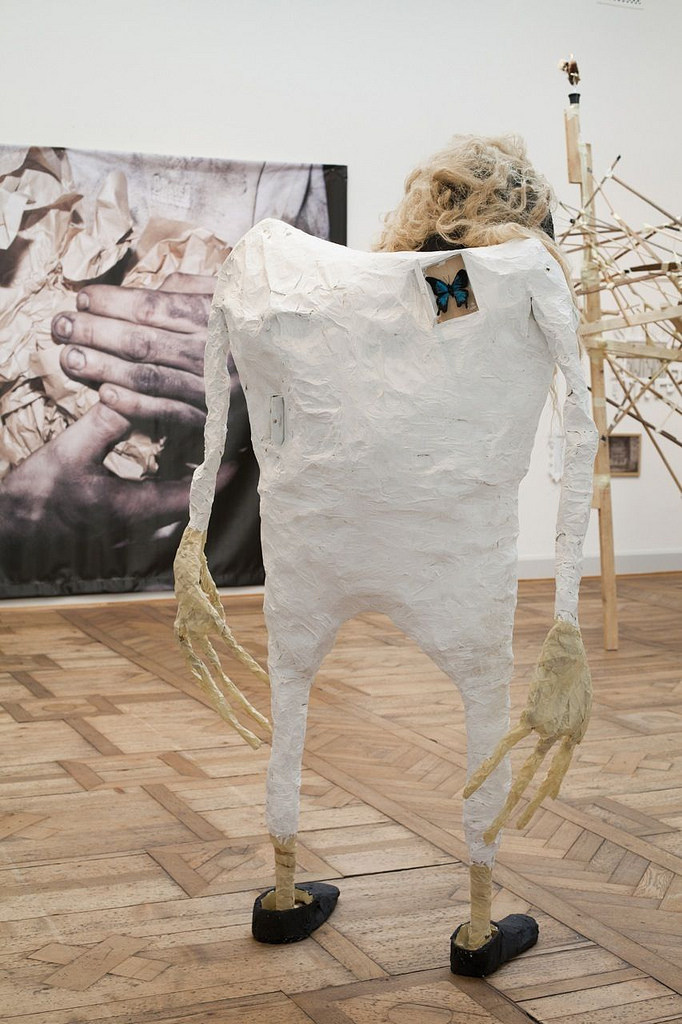
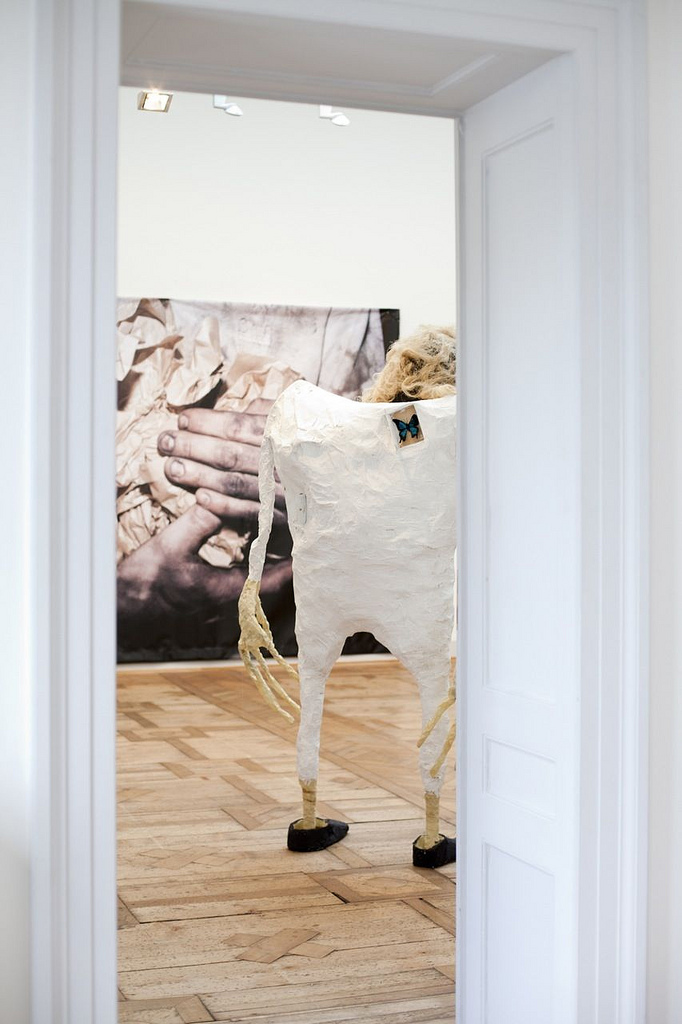
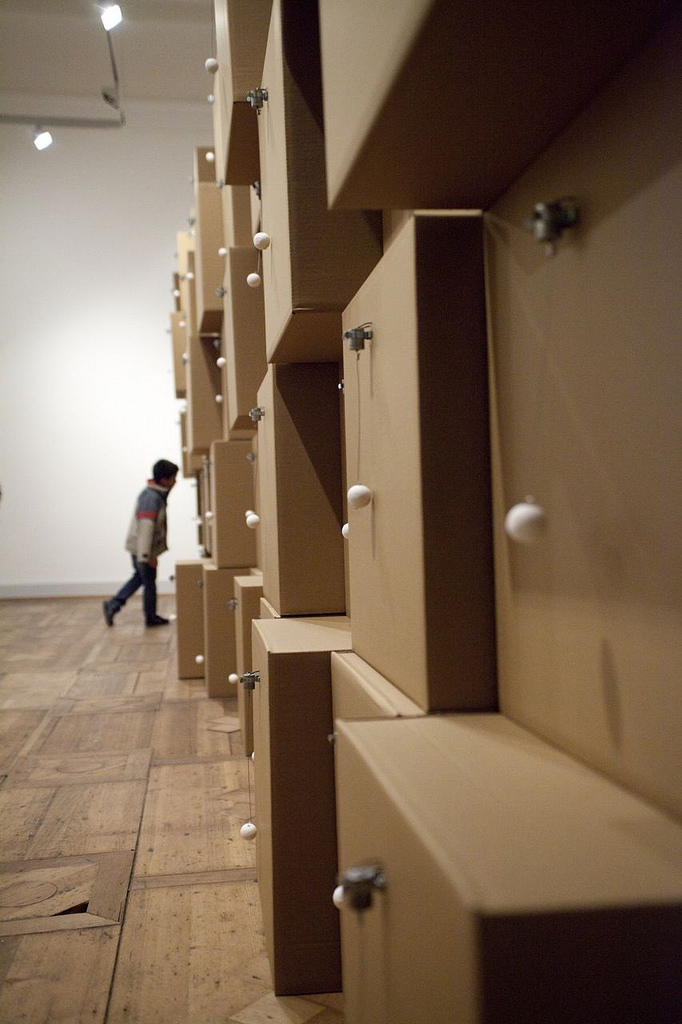
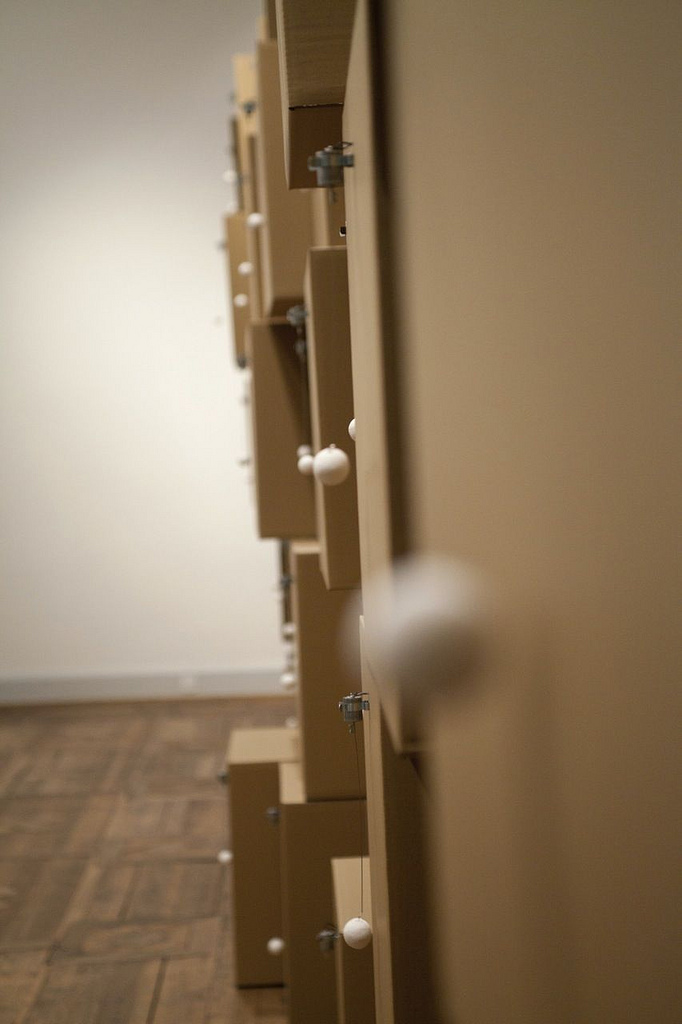
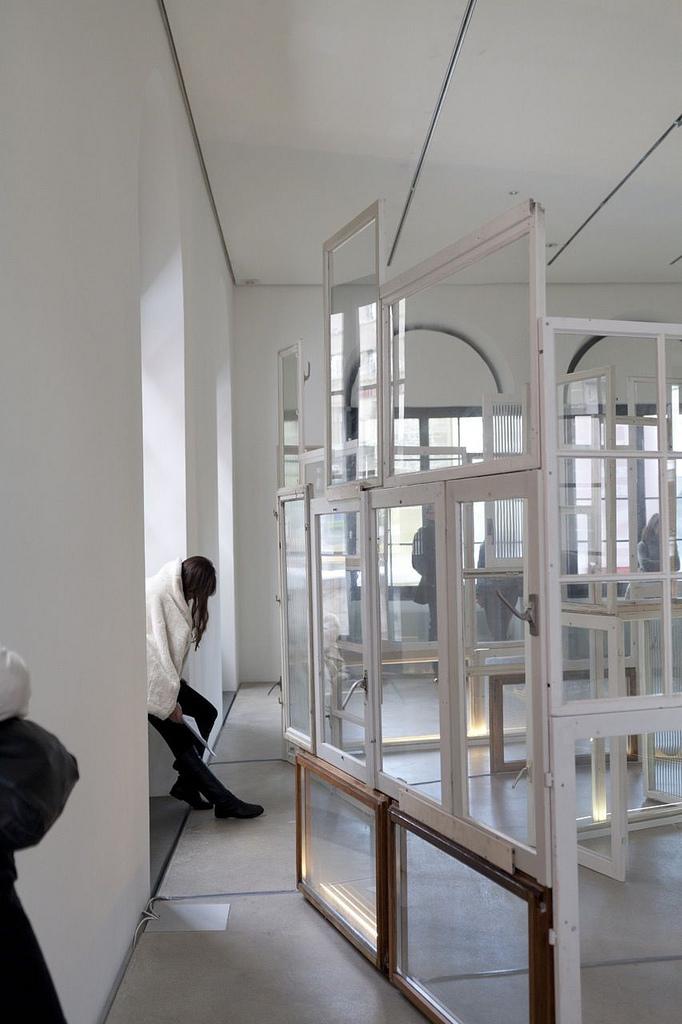
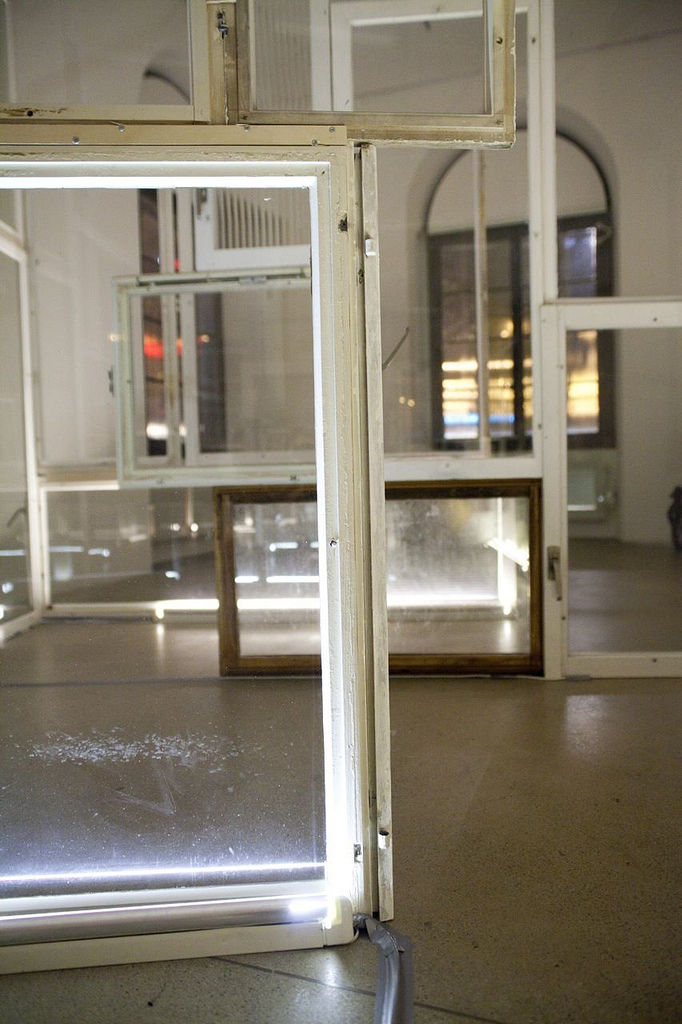
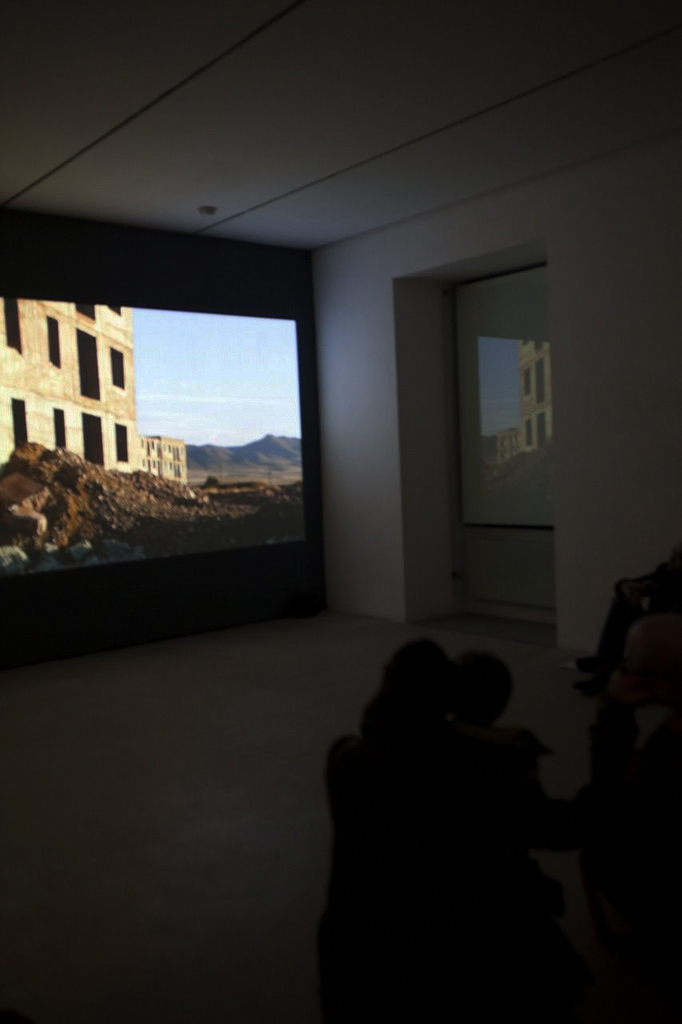
Participating
Artists
aldo mozzini
Pavillon 2012
Il est nécessaire d’approcher le travail d’Aldo Mozzini de manière contextuelle, afin de saisir les relations que ses œuvres entretiennent avec leur environnement. Une attention particulière est consacrée à la notion d’espace, prise dans sa dimension historique et sociale et comme interstice entre sphère publique et privée. Avec un dispositif métaphorique qui s’inspire autant du Crystal Palace que des structures de Dan Graham, l’artiste questionne tant l’espace d’exposition que les espaces qui le dépassent.
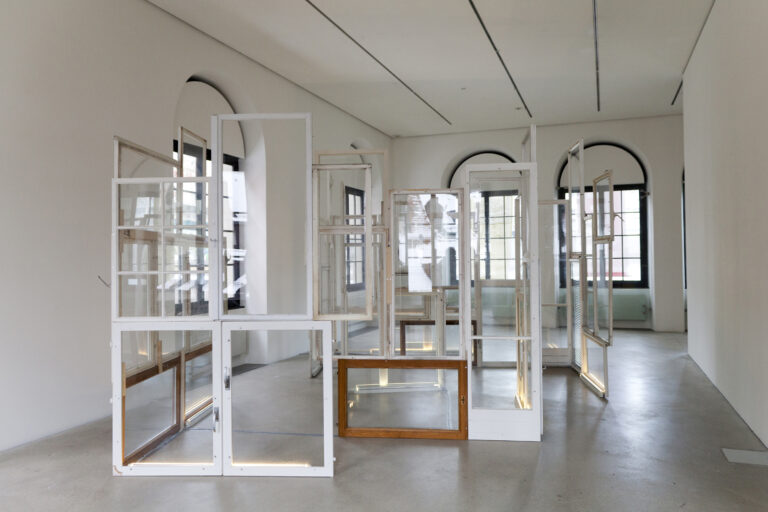
Augustin Rebetez
Noé Cauderay
Hyper-maison
Les œuvres d’Augustin Rebetez et Noé Cauderay, qu’il s’agisse d’agencements photographiques, d’installations sculpturales, de dessins ou de vidéos, habitent un univers à la fois mystérieux, scintillant, grotesque et légèrement décadent. Par des assemblages apparemment discordants et des compositions asymétriques, les artistes multiplient les pistes de lectures. Non sans un humour quelque peu grinçant et décalé, ils développent un travail aux diverses facettes.
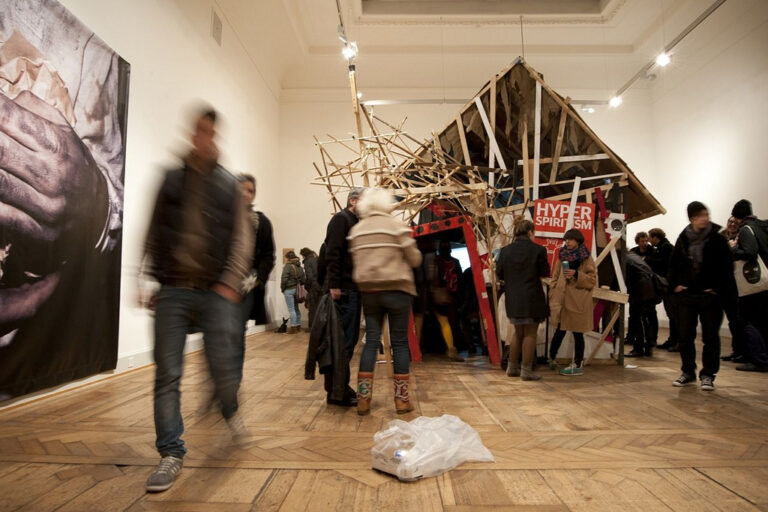
Lucas Herzig
Reflux
Utilisant des matériaux qui rappellent sans équivoque l’Arte Povera, Lucas Herzig envisage la création de manière phénoménale. L’artiste réalise des sculptures monumentales, des installations stratifiées évoquant aussi bien un système complexe en constante mutation que des reliques post-apocalyptiques. De ces structures à la disposition quasi organique, s’appropriant littéralement l’espace, se dégage un sentiment d’étrange et inquiétante beauté.

Melodie Mousset
On stoning and unstoning
Dans les œuvres de Melodie Mousset, le corps est conçu comme une entité à la fois physique et symbolique, manifestation tangible de l’individualité, de son appartenance à un genre déterminé et vecteur primordial d’interactions sociales. Dans On stoning and unstoning l’artiste met en scène son propre corps et son visage apparaît recouvert de pierres, matériau ambivalent, évoquant la sculpture ou le rituel autant que la violence. De ce glissement sémantique se développe et se dévoile une tension entre création et destruction, punition et défense, pouvoir et soumission.
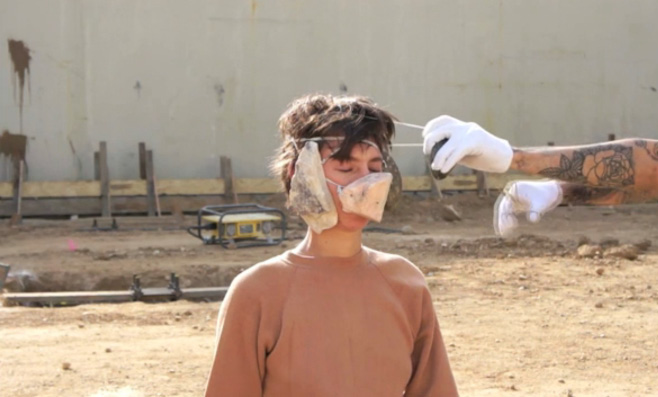
Uriel Orlow
Remnants of the Future I
Se situant à mi-chemin entre faits avérés et reconstitutions fragmentaires du passé, Uriel Orlow travaille dans les interstices de l’Histoire afin d’en révéler les zones d’ombre. Dans Remnants of the Future I, il filme la ville-fantôme de Mush, dont la construction, interrompue par un tremblement de terre en 1988, est restée inachevée suite à l’écroulement de l’Union Soviétique. Mush devient alors l’emblème d’une absence, hantée par les spectres d’une faillite économique, politique et idéologique.
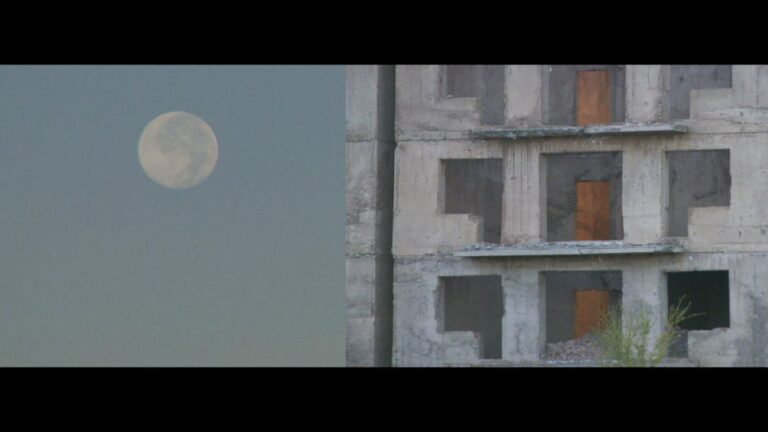
Zimoun
80 prepared dc-motors
Créateur d’espaces sonores à l’aide de mécanismes analogiques – moteurs électriques et matériaux ordinaires comme le carton – Zimoun propose une installation qui confronte le public à une expérience esthétique, tant sur le plan acoustique que visuel. À travers l’assemblage sériel de modules simples et fonctionnels, l’artiste réalise ainsi des dispositifs architecturaux d’inspiration minimaliste, dont les rythmes mécaniques s’imposent et s’opposent, dans un espace rigoureux hautement organisé.

